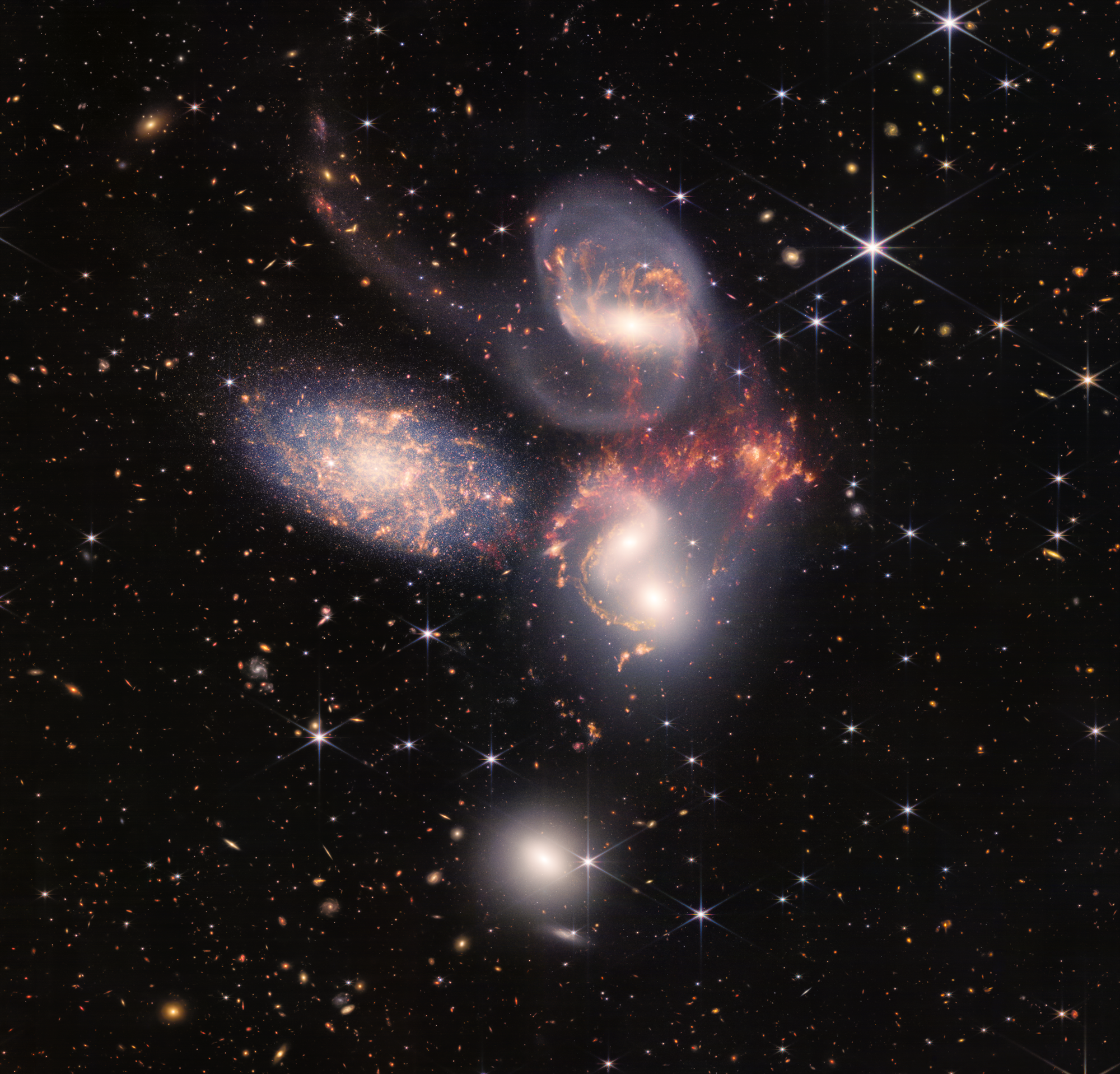Technology & STEMM
- Increase equity and access in STEMM education, especially for communities that are disproportionately affected by climate change. Here’s an example of a STEMM afterschool program.
- For teachers: bring space, our universe, and our planet into your classroom.
- Learn more about IoT devices and innovative initiatives to combat climate change (Interact, IoT for all).
- Lee this Vox article to learn about the International Energy Agency’s technological innovations to achieve net-zero carbon emissions and recommendations for how to move forward.
- Study the areas of STEMM and technology that speak most to your interests and experiences to better support research and development in those sectors.
- Request help from a woman in STEMM through 500 Women Scientists: a resource for journalists, educators, policy makers, scientists, and anyone needing scientific expertise.
- Advocate for the regulation of social media misinformation on climate change. You can increase your media literacy and take action here.
- Apply to grants that support research to understand and combat climate change. Check out the US Environmental Protection Agency’s grants and ClimateWork’s grants database.
- Learn more about climate indicators from this interactive ArcGIS StoryMap created by the World Meteorological Organization.
Chickpea Salad
Chickpea Salad
Looking for an easy and versatile protein-packed salad?
Try this vegan chickpea salad on a bed of greens, or sandwiched between lightly toasted bread!

Total Time: 10 Minutes
Servings: 4-5INGREDIENTS ⠀
- 1 can chickpeas, rinsed
- 3 tbsp vegan mayo or blended silken tofu
- 1 medium stalk celery, roughly chopped
- 2 tsp each: dried dill, onion powder, and garlic powder
- 2 tbsp fresh parsley, chopped
- 1 tbsp lemon juice
- Salt and pepper to taste
- 1 tbsp nori or dulse flakes (optional)
INSTRUCTIONS
-
-
Add all ingredients to a food processor and pulse until well combined, scraping the sides occasionally. Do not over-process. The goal is not hummus-like consistency, but a more chunky texture.
-
Tip: If you don’t have a food processor, you can mash it up by hand. It will take longer if using a potato masher (or even a fork), but it will still turn out lovely. If you take this route, chop celery into extra small pieces and add to the mashed mixture toward the end.
MORE RECEPIES
Navigating Challenging Conversations About Climate

Puesto que la cuestión climática intersecciona con muchas otras realidades sociales como la justicia racial, la justicia reproductiva y la seguridad nacional, entre otras, las conversaciones sobre este tema pueden ser muy controvertidas. De repente, el ambiente se caldea, los tonos de voz se alzan…
Los siguientes consejos tienen como objetivo facilitar la construcción de vínculos sólidos entre personas con diferentes perspectivas generacionales y/o educativas para potenciar la acción climática:

Déjate guiar por tu propósito.
Conecta a través de tus intenciones personales y expresa tu conexión emocional con la justicia medioambiental y la necesidad de acción climática. Trabaja a través de la empatía para construir vínculos relevantes.
- Explica cómo y por qué esta crisis te afecta directamente a ti, a tu comunidad, a las generaciones futuras, y cómo te sientes al respecto.
- ¡La acción importa! Es más fácil transmitir la urgencia de actuar empezando por ti. Sé el ejemplo del impacto que la acción climática también puede tener en tu vida personal.

Adopta nuevas dinámicas.
Elige la pasión en lugar de actitudes defensivas.
En el calor del debate, es común sentir diferentes emociones, incluidas la rabia o la frustración. Canaliza tus sentimientos y expresa cómo la problemática del clima te impacta emocionalmente.
- Céntrate en encontrar un lugar emocional común alrededor de lo que el clima significa en nuestras vidas. Utiliza expresiones como “Me alegra cuando…” o “Es frustrante para mí ver que…” Conviértelas en conversaciones más profundas empezando con preguntas como “¿Qué sientes al respecto?”.

Sé una persona abierta y receptiva.
Practica la escucha activa
Entender diferentes perspectivas te ayudará a tener más herramientas para hacer frente a argumentos negacionistas, calmar la eco ansiedad, y, en última instancia, tomar acción.
- Haz contacto visual y evita interrumpir de manera agresiva. También ten en cuenta que en algunas culturas es muy habitual intercalar comentarios durante una conversación.
- Evita respuestas preparadas, y procesa realmente lo que estás escuchando antes de responder. Pregunta lo que necesites si hay algo que no entendiste y/o que quieras clarificar.

Confía en las buenas intenciones.
No todo el mundo va a compartir tus perspectivas. Y… ¡No pasa nada! Todas venimos de distintos contextos climáticos y culturales. Las problemáticas climáticas pueden ser un buen punto de partida conversacional para aprender más sobre la experiencia de alguien.
- Pregunta sobre su actual conciencia climática. Averigua qué acciones, grandes o pequeñas, han tomado.
- Haz que tu objetivo sea compartir tus propios pensamientos y motivos para tomar acción, más que convencer a los demás para que lo hagan.

Evita invalidar o ser condescendiente con la experiencia de otras personas.
No cuestiones las habilidades o capacidades de los demás. En lugar de eso, intenta celebrar sus esfuerzos y motívalos a seguir trabajando en esa dirección, si les es posible.
- De forma inconsciente a veces reproducimos el silenciamiento sistémico de las voces infrarrepresentadas al invalidar sus experiencias vitales.
- Las generalizaciones o afirmaciones genéricas pueden ser dañinas e imprecisas. Evita usarlas y básate en tus propias experiencias.
¿Estás preparada para tener algunas conversaciones intergeneracionales sobre el clima?
Consulta a continuación algunas cuestiones y sugerencias de conversación para empezar:
- ¿Cuál es tu lugar preferido en la Tierra? ¿Es prospero ahora mismo? ¿Está bajo amenaza?
- ¿Cuál es tu relación con la naturaleza? ¿Ha evolucionado a lo largo del tiempo?
- ¿Cómo eran los inviernos cuando eras más joven? ¿Y los veranos? ¿Cómo han cambiado las estaciones a lo largo de tu vida?
- ¿Hay algún alimento que solías comer que ahora ya no esté tan fácilmente disponible?
- ¿Cuándo experimentaste por primera vez la crisis climática y empezaste a pensar en sus consecuencias? ¿Puedes contar alguna situación personal en concreto?
- ¿Cómo te sientes en relación al futuro? ¿La situación climática influye en lo que visualizas o planeas?
- ¿Te has mudado alguna vez de ciudad o país? De ser así, ¿cuál fue la razón por la que te mudaste? ¿Esta relocalización cambió drásticamente el ambiente o el clima en el que vives?
- ¿Has dejado algo atrás en búsqueda de un futuro mejor para ti o tus futuras generaciones?
- ¿Cómo te sientes en relación a la crisis climática? ¿Hay algo que no comprendas?
- Para los menores de 40 años: ¿Has preguntado alguna vez a alguien mayor que tu si participaron en las protestas contra la guerra del Vietnam, en el movimiento para la protección de las aguas indígenas, en defensa de los derechos de las mujeres y/o en apoyo a la comunidad LGBTQIA+, así como el matrimonio igualitario interracial?

"Creo que la alianza intergeneracional es útil porque puedes tener diferentes perspectivas de una cuestión, en este caso la lucha climática Las personas mayores han probado alternativas cuando han visto que un camino no funcionaba. Ellos saben más".
- LEVI DRAHEIM. Activista climático y Demandante del caso Juliana vs. United States. (Dicho a los 15 años)
“Cuando escucho historias sobre cómo ha cambiado el medioambiente, cómo las políticas han cambiado, cómo las preguntas de la gente son distintas [es posible hacer una estimación del efecto del cambio climático]. Por otra parte, los jóvenes saben cómo usar las redes sociales muy bien, pueden moverse y hacer correr la voz, llevar a cabo el proyecto artístico guay que haga que la gente mire y hable al respecto. Tener una combinación de personas de varios grupos de edad siempre es útil. Creo que la diversidad y la comunidad es muy beneficiosa para éste movimiento.”
– LEIGH-ANN DRAHEIM. Educadora y madre de Levi y Juniper. (Dicho a los 36 años)
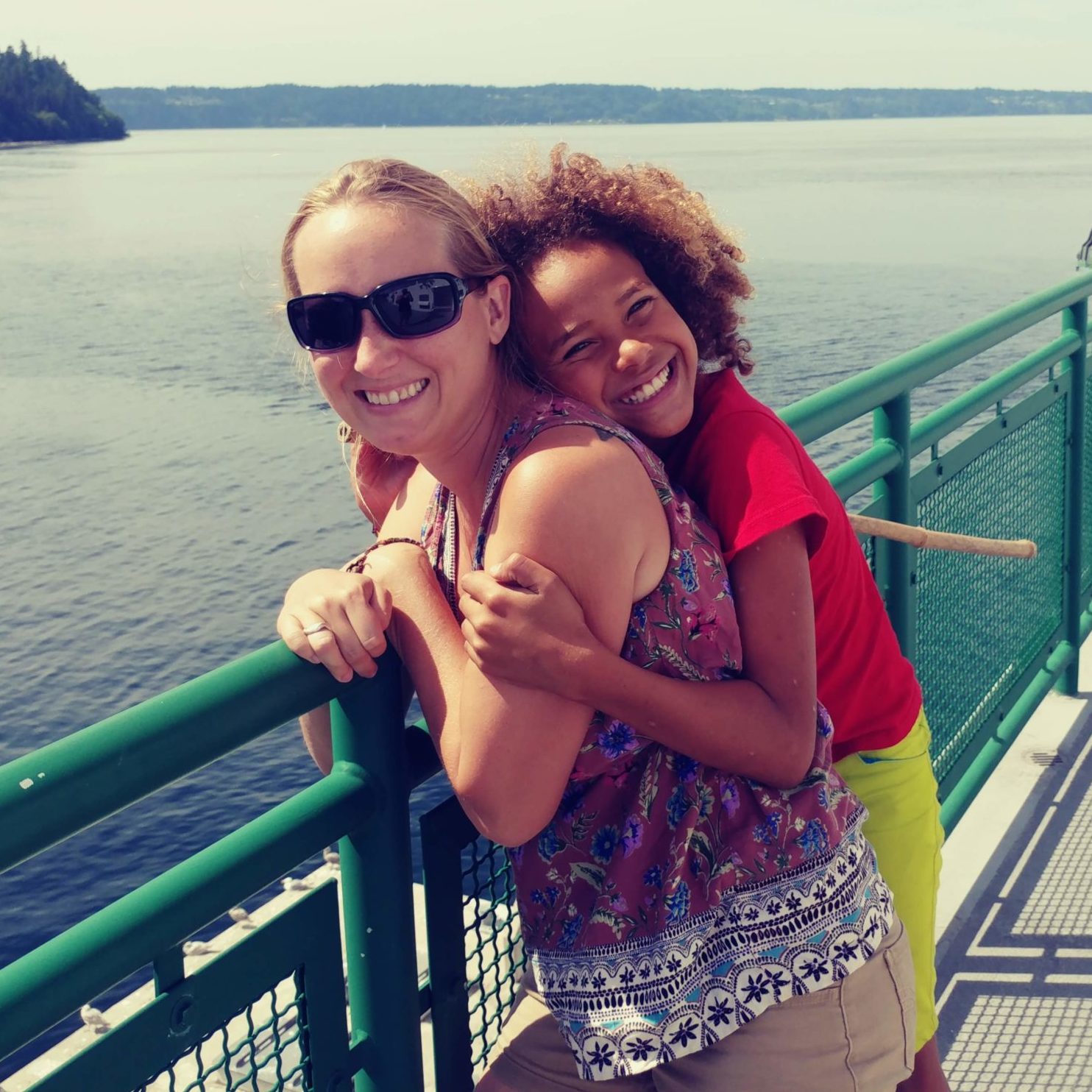
Sesame Cauliflower Rice
Sesame Cauliflower Rice
Looking for a vegetable that is a great source of fiber and will keep you full?
Try this vegan-friendly side dish that is a warm, comforting, umami-rich snack!
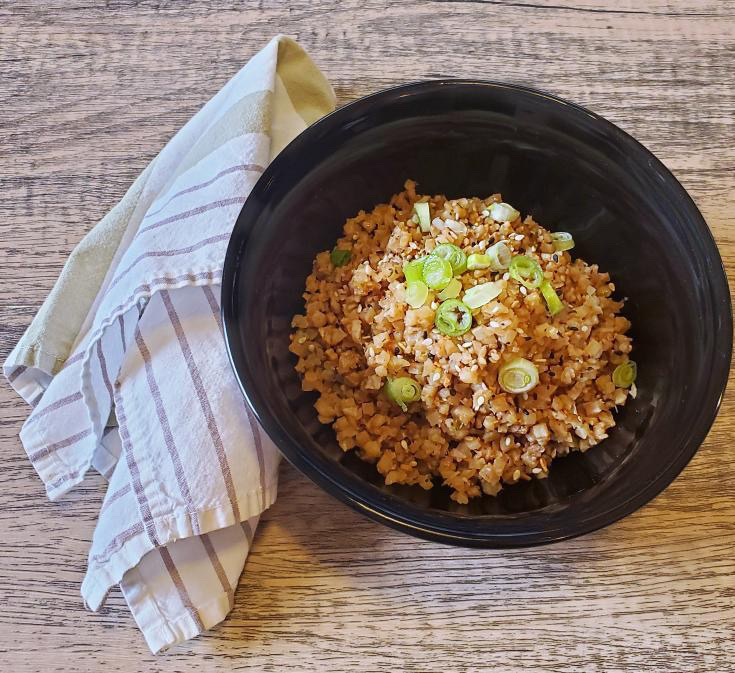
Prep Time: 3-5 Minutes | Total Time: 15 Minutes
Servings: 4INGREDIENTS ⠀
- 1 package frozen cauliflower (4 servings) ⠀
- 1 tbsp sesame oil
- 1 tbsp soy sauce
- 1 tsp garlic powder and onion powder
- 1/2 tsp turmeric powder and cumin
- Toppings: sesame seeds, green onions, and chili sauce
INSTRUCTIONS
- Empty the bag of frozen cauliflower into a bare pan on medium heat. Stir occasionally. The ice crystals will melt and help create a barrier to prevent the rice from burning. If ice crystals are not noted, you may consider adding 1-2 Tablespoons of liquid or broth.
-
As the cauliflower begins to thaw, stir in seasonings and soy sauce.
-
Turn heat up to medium-high and stir frequently. This will allow the rice to get crispy, but you must stir frequently.
-
As the cauliflower texture begins to appear crisp, drizzle sesame oil over the rice rice, stir, and heat for another minute or so. Note: adding sesame oil toward the end of the cooking process retains much of the toasted sesame flavor without an excessive amount.
Download RecipeMORE RECIPES
Desaprendiendo el tiempo y la edad
Desaprendiendo el tiempo y la edad
Creando pasados alternativos para el futuro
¿Y si una sola imagen pudiese contener todas nuestras experiencias?
Esto es lo que el telescopio James Webb ha capturado en esta histórica imagen de las primeras galaxias, cuando el universo se formó hace 13 millones de años¹.
Tómate un momento para procesar la magnitud de este descubrimiento y meditar sobre cómo entendemos individual y colectivamente los conceptos de “edad” y “tiempo”.
¿Qué edad tienes?
Saber la edad de una persona es una manera de aproximarse a los periodos históricos que ha vivido. Aún así, para ampliar el conocimiento sobre su perspectiva generacional, es importante formular preguntas en lugar de caer en estereotipos respecto a la edad.
¿Qué significa para ti cumplir años?
Las culturas indígenas y los pueblos nativos e alrededor del mundo honran y animan a sus mayores a transmitir su sabiduría y experiencias vitales.
En el último año, ¿cuántas conversaciones profundas has tenido con alguien 10, 20 o 40 años mayor o menor que tú?
¿Te contaron sus sueños, deseos o preocupaciones?
¿En qué se parecen o se diferencian de los tuyos?
¿A gran escala, cómo son comparables el tiempo y edad?
Imagina 100 años, un siglo, y compáralos con un millón de años, diez mil siglos. Ahora imagina una persona de 20 años y una persona de 80 años. Visto así, ¿cómo de diferentes pueden ser realmente?
¿Te ves como un/a ancestro/a?
Independientemente de si tienes o piensas tener hijo/as, pensarte como un ancestro te hace responsable de dejar un planeta habitable para todas.
Si pudieras escoger un momento en el tiempo para realizar alguna acción climática, ¿qué período elegirías y por qué?
¿De qué manera ayudaría esta acción en la lucha contra la crisis climática? ¿Sería posible realizar esta acción hoy en día?
Resources for Intergenerational Allyship

LEE
- “Leyes climáticas y justicia intergeneracional ¿Establecen las leyes climáticas de reducción de emisiones cargas injustas para los jóvenes?” por Helena Ancos
- ¡Siete maneras de apoyar a los jóvenes activistas de su vida! por Dr. Jessica K. Taft
- Compilación Cinco claves para mejorar la comunicación intergeneracional por Universidad de la Sabana .
- .
- Guía “Activismo intergeneracional y el liderazgo interseccional de la juventud” por Forum Generación Igualdad
- El activismo juvenil por sí solo no puede salvarnos: un caso para las coaliciones ambientales intergeneracionales por OreOluwa Badaki
- Monográfico: La intergeneracionalidad. Espai Social (2009)
PROFUNDIZA
- Gaia Pacha: Conversatorio Intergeneracional de Mujeres y Cambio Climático”
- “El cambio climático: Conversación intergeneracional, ABUEL@S y NIET@S” organizada por Generaciones Unidas . Conversatorio
- Hacia una sociedad intergeneracional: ¿Cómo impulsar programas para todas las edades? . Una guía práctica de la Diputación Foral de Bizkaia.
- Guía introductoria para Programas Intergeneracionales del Instituto de Mayores y Servicios Sociales de España (Imserso)

-
Comparte esta guía con activistas por el clima de tu red y practica más conversaciones intergeneracionales
-
Juega 'Adivina cuándo...' o usa recursos como “Parents Are Humans” para romper el hielo y traer la cuestión climática en las respuestas.
- ¡No olvides registrarte para votar! Si ya lo hiciste, ayuda a otras en tu comunidad a hacer lo mismo y facilita transporte a los centros de votación para aquellas que más lo necesiten.
- Si eres estudiante o miembro de una institución académica, consulta la sección “Acción climática en práctica” de nuestro 'Kit para educadores ' .)
-
Consulta las redes medioambientales de tu barrio, área o ciudad y averigua si hay grupos organizados dedicados a ello. Nuestro Mapa de Acciones Locales puede ayudarte.
¿Por qué son importantes las conversaciones intergeneracionales?

Sea cual sea el tema de un intercambio intergeneracional, hay múltiples razones por las que los debates multigeneracionales pueden ser relevantes.

Históricamente, las generaciones jóvenes han impulsado movimientos sociales, y han alzado la voz para exigir justicia. No obstante, las generaciones mayores son más proclives a votar y hacerse oír electoralmente.
Las generaciones jóvenes tienden a cambiar sus visiones políticas cuando se hacen mayores. Por ejemplo, durante el movimiento por los derechos civiles en los años 60, adolescentes y jóvenes apostaron por la acción directa y el optimismo radical para cambiar el status quo¹. Hoy en día, esta generación representa el bloque de votantes más activo en Estados Unidos, pero también es el grupo menos proclive a apoyar la acción climática.
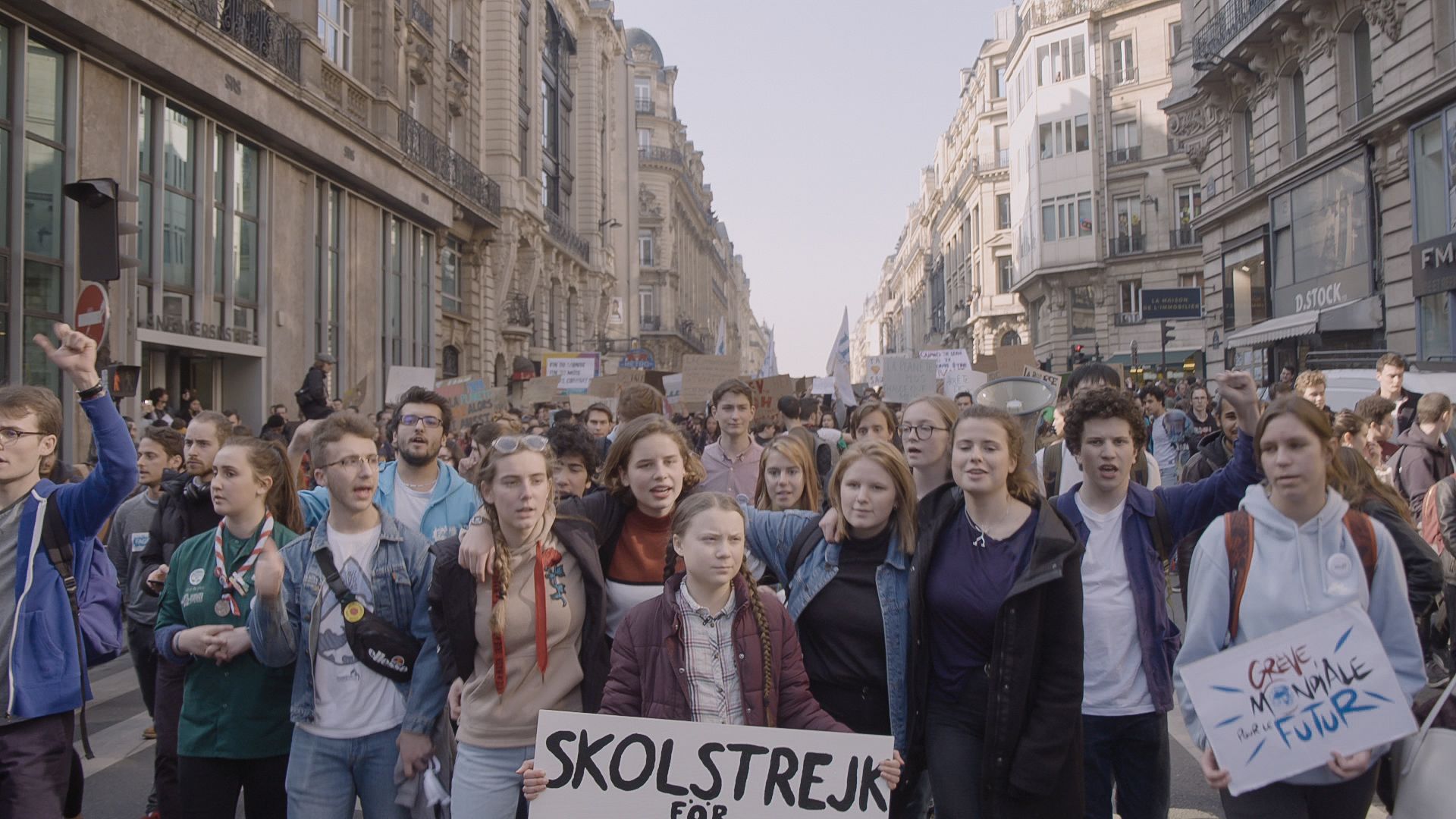

Muchos millennials y centennials priorizan valores de justicia social progresista y ven el aumento de la diversidad como algo positivo socialmente. En el marco de la justicia climática, los jóvenes activistas subrayan la importancia de la interseccionalidad y la equidad global. De la misma manera, personas pertenecientes a la generación X, a los baby boomers y a la generación silenciosa también abogaron en su juventud por cambios sociales relevantes para sus ideas y prácticas.
En Estados Unidos, casi la mitad de los ciudadanos post-millennials no son blancos, o pertenecen a las mayorías globales, comparado con menos del 20% que se identificaba como tal a finales de la década de 1960s [3].
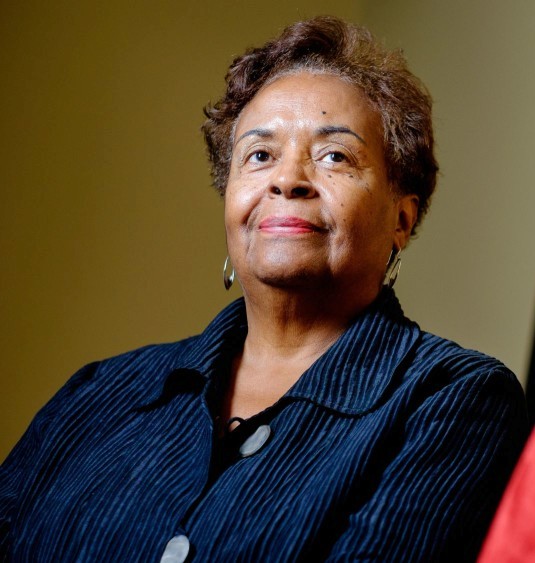
““El movimiento era lo más emocionante en lo que uno podía involucrarse (...) No había un momento ni un lugar más emocionante en los que haber nacido … Recuerdo que mi tío Archie, que estuvo en Francia en la Primera Guerra Mundial, siempre nos decía: “Tu generación va a cambiar las cosas”.”
– JOYCE LADNER, activista del movimiento por los derechos civiles [4] (Dicho a los 67 años)

Los activistas mayores y con más experiencia tienden a tener más facilidad a la hora de comprender y gestionar sistemas complejos a escala institucional o profesional. Pueden estar capacitados para ofrecer acompañamiento, recursos financieros o consejos personales. Por el contrario, la gente joven necesita apoyo financiero, legal y/o institucional para generar el cambio en sistemas muy enquistados.
¿Cómo podemos impulsar el diálogo intergeneracional para equipar organizaciones e individuos con mayor acceso a recursos gratuitos y sistemas de ayuda mútua?

Es crucial que las generaciones más jóvenes de una misma familia insten a sus padres, madres, abuelas y abuelos a actuar en la cuestión climática, con urgencia. Un buen punto de partida para ello puede ser darle un enfoque personal, y mostrar cómo estas problemáticas están afectando las vidas y las decisiones de los y las jóvenes, y las futuras generaciones.
Según un estudio de participación electoral realizado por la Universidad de Cambridge, la orientación política de los padres, y su implicación al respecto durante los primeros años de edad de sus hijos e hijas es uno de los mayores indicadores para poder predecir los hábitos de voto de alguien a lo largo de su vida. El fenómeno contrario, es decir, nietos y nietas cambiando el voto de sus padres o abuelos, es mucho más difícil de conseguir, pero los datos muestran cómo de importante puede ser la presión grupal a la hora de determinar los patrones de voto de alguien. Por ejemplo, según una encuesta realizada por NPR/Ipsos, las personas que no votaron declararon que solo el 31% de sus amigos votaron, en comparación con ciudadanos que votaron junto al 83% de sus amigos[6].
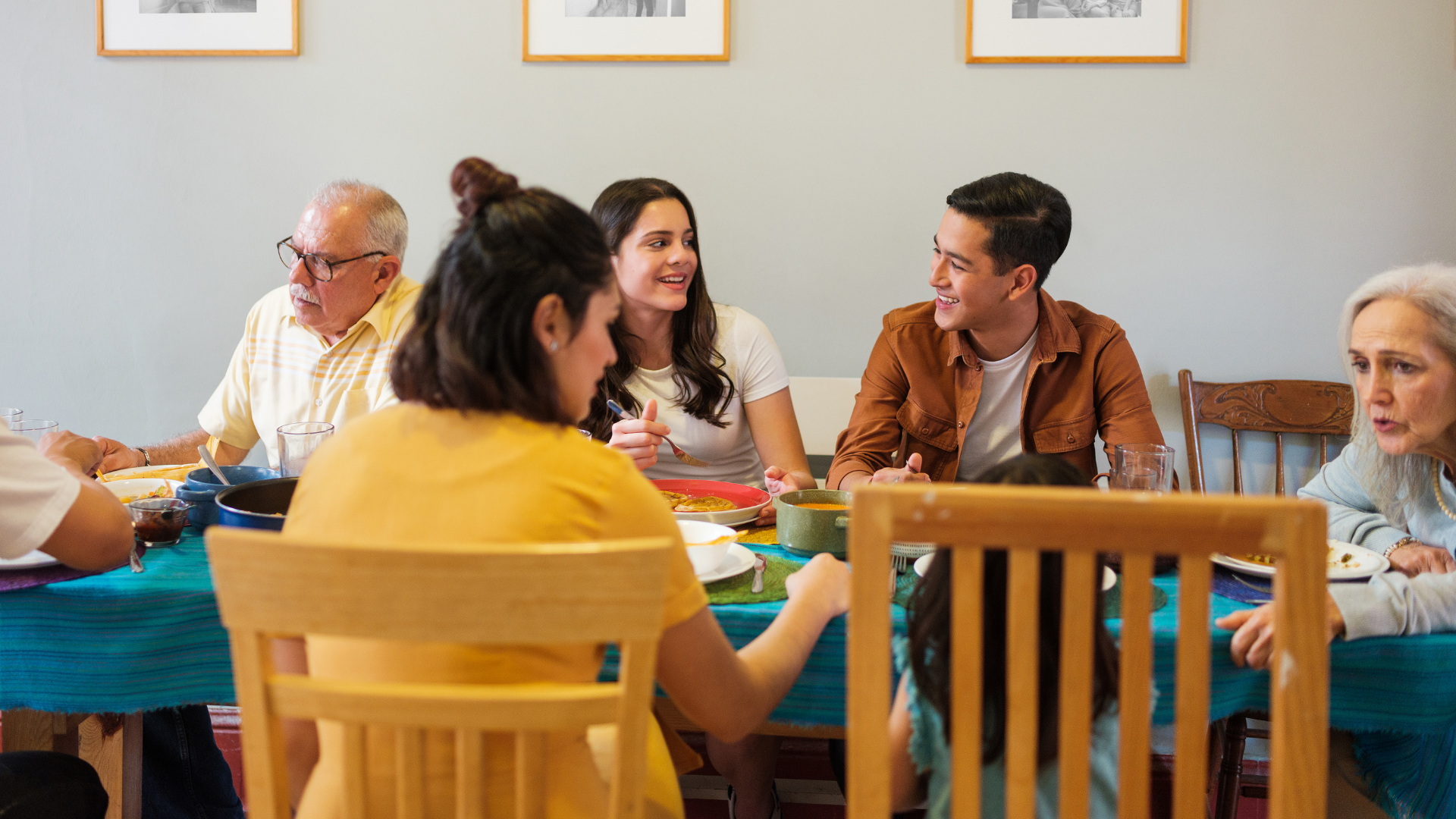
¿Estás lista para empezar una conversación intergeneracional?
________________________
[1] “Youth in the Civil Rights Movement”. Civil Rights History Project from the Library of Congress
[2] Pew Research Study “Generation Z Looks a Lot Like Millennials on Key Social and Political Issues”
[3] Pew Research Center: A demographic portrait of today’s 6- to 21-year-olds (15 de noviembre, 2018)
[4] Joyce Ladner, Oral Interview Compiled by Library of Congress in Washington, D.C.(20 de septiembre, 2011)
[5] Columbia Press University: “Voter Turnout and the Dynamics of Electoral Competition in Established Democracies since 1945”
[6] Medill School of Journalism/Ipsos Poll: Non-Voters in 2020 U.S. Election by Ipsos. Publicado por NPR
Time Travel Game: Guess When?

Un viaje en el tiempo: "Adivina Cuándo..."
Este juego es similar a “¿Quién es quién?” o “¿Adivina quién?”, y está diseñado para trabajar en tus habilidades de cogeneración y empatía. Así se juega:
Primero, a cada jugador (es decir,que un viajero en el tiempole es asignada una década para vivir. Puedes distribuir tarjetas físicas al azar (encuéntralas abajo) o puedes utilizar este generador:
2. Después de que un viajero en el tiempo a cada viajero en el tiempo, desde el año 1850 hasta el 2100, todos recibirán cuatro datos históricos relacionados con eventos de justicia social y climática de ese período.
A colorBlanco y negroSi estás jugando en persona puedes imprimir las tarjetas. Te dejamos dos versiones, una a color y otra en blanco y negro.
3. Toma un minuto para aprender más sobre los datos de tu década y ver si puedes verte reflejado en ellos.Usa tu verdadero nombre, edad y/o lugar de residencia como tu contexto personal, o crea de cero un personaje para identificarte durante el juego.
4. Un voluntario se presentará el primero y compartirá como mínimo un dato o una historia personal sobre el tiempo que le ha tocado vivir. Después, la persona a su izquierda continuará. Exprésate brevemente.
5. Después de las introducciones, que un viajero en el tiempo deberá responder UNA pregunta de los demás jugadores. Sigan el mismo orden establecido en la primera ronda. En menos de un minuto, todos pueden hacer lluvia de ideas sobre qué preguntas hacer, y elegir la favorita para preguntar a la persona que le toque en esa ronda.
Cuando sea tu turno de responder, sé creativo y aprópiate de los datos que te han dado, a través de tu propia narrativa histórica. Evita contestar con sólo “si” o “no”, y comparte un poco más sobre tu historia climática personal.
7. Después de que un viajero en el tiempo responda una pregunta, cualquier jugador puede intentar adivinar en qué tiempo “viven” o “de dónde vienen”.Para hacerlo, levanta tu mano y aporta al menos un argumento oral que justifique tu decisión.
8. Si otro jugador adivina tu período temporal correctamente, sigue jugando y preguntando a los otros para adivinar en qué década están. Después de 4 rondas, si la década de alguien aún no ha sido desvelada, pueden revelarla libremente en voz alta.
Técnicamente, este juego no tiene ganadores o perdedores, pero el jugador que adivine correctamente más décadas puede ahora presumir de ello. El objetivo de este juego es mejorar tu capacidad de mantener conversaciones intergeneracionales y tu empatía, a través de la curiosidad, la exploración y la diversión del juego de rol 🙂
Time Travel Game: 1850s
1850-1859
DATO #1
Charles Darwin publica El Origen de las Especies.
DATO #2
El éxodo hacia el este de Estados Unidos provoca un boom económico.
DATO #3
Descubrimiento de fósiles neandertales en el Valle del Neander, Alemania.
DATO #4
Primera fotografía de un eclipse de sol total.
Time Travel Game: 1880s
1880-1889
DATO #1
Inicio del proceso de desarrollo y producción comercial de la electricidad.
DATO #2
Los colonizadores occidentales celebran la Conferencia de Berlín y se reparten el territorio de África.
DATO #3
Empiezan a proliferar los vehículos con motor de gasolina.
DATO #4
La Estatua de la Libertad llega a Nueva York desde Francia.
Time Travel Game: 1900s
1900-1909
DATO #1
Estreno de la primera película muda, "Asalto y robo de un tren".
DATO #2
Nacimiento de la cultura jazz.
DATO #3
Primer vuelo comercial.
La ruta fue en Florida de St. Petersburg hacia Tampa.
DATO #4
Inicio del movimiento por el voto femenino, conocido como Las Sufragistas.
Time Travel Game: 1920s
1920-1929
DATO #1
La producción en masa y el consumo de bienes comerciales estalla en los Estados Unidos.
DATO #2
Hollywood y Nueva York se convierten en mecas del arte cinematográfico.
DATO #3
Compañías petroleras extranjeras empiezan a extraer petróleo en Venezuela
DATO #4
La Gran Depresión empieza con el “Martes Negro” cuando el mercado colapsa.
Time Travel Game: 1940s
1940-1949
DATO #1
Los Estados Unidos ponen fin a la segregación racial en las Fuerzas Armadas.
DATO #2
El cohete V-2 toma la primera imagen de la Tierra desde el espacio exterior.
DATO #3
Mahatma Gandhi, activista por la independencia de la India, es asesinado.
DATO #4
Se forman las Naciones Unidas después de la Segunda Guerra Mundial.
Time Travel Game: 1970s
1970-1979
DATO #1
Muchos jóvenes activistas se unen al Movimiento por la Liberación Gay.
DATO #2
Descubren el agujero de la capa de ozono en la Antártica y comienzan los esfuerzos para revertirlo.
DATO #3
Se celebra el primer Día de la Tierra.
DATO #4
Se inventa el Walkman, convirtiéndose en el primer dispositivo personal para escuchar música.
Time Travel Game: 1990s
1990-1999
DATO #1
El Protocolo de Kyoto es el primer acuerdo para reducir los gases de efecto invernadero. El senado de los Estados Unidos no lo ratificó.
DATO #2
El comercio internacional aumenta después del Tratado de Libre Comercio de América del Norte.
DATO #3
Empieza el uso generalizado de Internet y se crea Google.
DATO #4
La Cuarta Conferencia Mundial sobre la Mujer celebrada en Beijing marca un antes y un después para la agenda global por la igualdad de género.
Time Travel Game: 2000s
2000-2009
DATO #1
Comienza la guerra e invasión de Estados Unidos de Afganistán.
DATO #2
El parche anticonceptivo es inventado y comercializado.
DATO #3
El Huracán Katrina devasta la Costa del Golfo.
DATO #4
El cambio climático y el calentamiento global devienen preocupaciones globales.
Time Travel Game: 2010s
2010-2019
DATO #1
Los Parques Nacionales y los ríos alrededor del mundo son declarados como identidad medioambiental; el mismo estatus de una persona legal.
DATO #2
El Acuerdo de París pacta limitar el calentamiento global a menos de 1’5° C antes del 2030
DATO #3
La crisis económica hace que surjan los movimientos 15M y “Occupy Wall Street”
DATO #4
Viernes por el Clima convoca 4,500 huelgas escolares en 150 países.
Time Travel Game: 2050s
2050-2059
DATO #1
Los gobiernos están bajo gran escrutinio por sus compromisos de emisiones cero de carbono.
DATO #2
Nigeria tiene 400 millones de habitantes y sobrepasa a los Estados Unidos.
DATO #3
Casi el 70% de la población mundial vive en áreas urbanas.
DATO #4
La contaminación del aire es la principal causa global medioambiental de mortalidad prematura.
Time Travel Game: 2090s
2090-2099
DATO #1
Las emisiones de gases de efecto invernadero no se han reducido y la temperatura ha subido 4° C (7’2° F)
DATO #2
El nivel del mar asciende entre 30 y 100 cm (de 12 a 39 pulgadas) y todas las comunidades costeras, incluyendo grandes ciudades, ya han sido impactadas.
DATO #3
Ya no hay hielo en el océano Ártico durante el verano.
DATO #4
El 80% del bosque del Amazonas se ha perdido.
Energías Renovables
- Read about the need for climate-focused agriculture policy and take action here!
- Voice your support for local clean energy projects in your community.
- Teach kids about renewable energy from a young age! You can even make solar-powered s’mores.
- Organize a fossil fuel divestment movement at your college or university, or join a chapter that is already mobilizing!
- Approach your utility company and local politicians to implement or follow up on a schedule for renewable power adoption. See how your state is doing here.
Finance & Divestments
- Explore the whole Banking on Climate Chaos report to get a full picture of how the runaway funding for fossil fuel extraction and infrastructure fuels climate chaos and threatens the lives and livelihoods of millions.
- Call your bank and demand divestment from fossil fuels with the help of Stop the Money Pipeline.
- Disinvest from carbon-heavy industries and investments by using this guide. Making sure your financial portfolio matches your beliefs is a sound investment in our collective future. Many mutual funds and retirement accounts offer clean energy and carbon-free options, and various groups have helped demonstrate the risk of carbon-heavy investments in light of a worldwide shift toward cleaner energy.
- Support the Adaptation Fund which uses grants to finance localized projects and programmes that help vulnerable communities in developing countries adapt and build resilience to climate change.
- Build public pressure to create “green” banks and encourage banks to subsidize adaptation projects
for sustainable housing development.
Quorn Fillet With Grilled Vegetables
Quorn Fillet With Grilled Vegetables

INGREDIENTS ⠀
- 400 g cherry tomatoes
- 4 red peppers
- 2 yellow onions
- 5 garlic cloves
- 4 tbsp rapeseed oil
- 200 g spinach
- 350 g Quorn fillet ⠀
- 400 g mushrooms
- 1 tbsp thyme⠀
- 2 tsp black pepper & salt⠀
- 4 tbsp sweet chili
- 2 tbsp olive oil
- lemon juice
INSTRUCTIONS
- Preheat the oven to 180 degrees.
- Cut the red peppers and yellow onions into 5 parts. Cut the mushrooms into 2 parts. Add the cherry tomatoes.
- Season with thyme and black pepper.
- Add rapeseed oil and mix it. Bake in the oven for 20 minutes at 180 degrees.
- Heat a saucepan with garlic cloves and olive oil. Divide the Quorn fillet into small pieces and fry it in the saucepan. Add salt.
- Heat for 20 minutes at a low temperature.
- Then add all baked ingredients into the saucepan with sweet chili, some lemon juice, and spinach. Mix together.
MORE RECEPIES
Organización Juvenil
Organización Juvenil
¿Por qué es importante?
Liderazgo Juvenil y Superpoderes
- Los jóvenes pueden cambiar el mundo: "A lo largo de la historia y hoy en día, muchos movimientos sociales han sido dirigidos y movilizados por gente joven. Han marcado el camino a seguir en lo que concierne a cambio social, y prueba de ello son los grupos que hicieron que las elecciones del 2020 tuvieran la mayor participación electoral, o los estudiantes de Stoneman Dougles, quienes aprovecharon una tragedia para propulsar una demanda nacional por el cambio."(“Remember these faces, Remember Us”)
- Los jóvenes abarcan un amplio rango de habilidades: Ya sea haciendo varias cosas a la vez, hablando sin tapujos sobre la causa, o pensando la mejor manera de lanzar el mensaje, los jóvenes tienen una perspectiva imparable de lo que pueden hacer y como aplicar sus habilidades para llegar a sus objetivos. Al luchar por una causa, estan desarrollando aún más estas habilidades, lo que les permite ser grandes líderes y adultos cívicamente activos.
- La gente joven es colaborativa: Los jóvenes se apoyan mutuamente, y reconocen cuando pueden necesitar ayuda de los demás. Utilizan superpoderes a su favor, y eligen plantar cara cuando lo ven necesario, y colaborar con los demás cuando les falta conocimiento o experiencia.

Tal como dijo el activista James Margolin, El Poder que Tienen los Jóvenes Activistas:
- Energía y perspectivas frescas:: "La juventud trae nuevas ideas, asi como energía fresca y elempuje que muchos de los mayores han perdid. Nadie sabe mejor que nosotros lo que es crecer en los tiempos que corren".
- Experiencia en las cuestiones que nos afectan personalmente: "Muchos adultos en posiciones de poder no asimilan o tan siquiera oyen hablar sobre cuestiones importantes del cine desde una perspectiva juvenil. No sienten el cambio climático como nosotros: no sienten los préstamos estudiantiles o la economía que hace que cada vez sea más difícil para nosotros encontrar trabajos bien remunerados. Cuando hablamos sobre por lo que estamos pasando, a la gente le resuena, y queda realmente mal cuando alguien poderoso desacredita las experiencias vitales de una persona joven".
Descargar PDF"Más allá de saber el poder que tienes o no como persona joven en este mundo, es importante que sepas lo que te espera, sea como sea. Recuerda que cuantas más identidades marginalizadas te atraviesen como individuo, más difícil será para ti avanzar. Sé consciente de cómo el mundo te percibe (aunque dichas percepciones no sean verdaderas), para prepararte y superar sus nociones preconcebidas"Youth to Power)
Food, Agriculture & Regeneration
- Learn more about Regenerative Organic Certified food and what it means for the environment.
- Support farmer’s markets & local food. Use USDA directory + Local Food Source map to locate local farmers markets. Did you know that food in the U.S. travels an average of 1,500 miles to get to your plate? All this shipping uses fossil fuels and other natural resources, and generates GHG emissions. (CUESA)
- Support organizations in calling political representatives to rein in the “Big Meat monopoly.” (Source)
- Join Clean Water For All Coalition to engage and mobilize Americans from coast to coast advocate for commonsense protections for, and equitable access to, clean water.
- Local food movements do not necessarily mean equitable food systems. Learn from A Growing Culture what actually needs to be done to change the food system.
- Understand how climate change affects fish/aquatic systems, ocean acidification and global food security, and why freshwater ecosystems are considered among the most threatened on the planet.
- Listen to episode #275 en clase. La página de Teachers for Future Spain tiene una gran variedad de contenido e incluso la posibilidad de formar parte de su #276 of the Green Dreamer podcast to learn more about decentralizing power in agriculture and regenerative agriculture legislation (Find more episodes here).
- Promote suburban agriculture in your community! This resource provides insight on creating suburban farms.
- Learn about regenerative agriculture and why it’s the next big thing. Escucha to Mari Stuart, founder of Project Grounded for the lowdown.
- Help reduce food waste while also feeding those in need by working with organizations like The FarmLink Project who connect farmers with food banks. Transportation costs are covered in order to deliver fresh food to communities in need.
- Read about “Five Indigenous Farming Practices Enhancing Food Security” and connect with organizations mentioned in the piece. Follow the guidance of BIPOC farmer/gardeners here, too.
Conversaciones Intergeneracionales
Conversaciones Intergeneracionales
Intergenerational conversations are an important aspect of both understanding climate change and helping inform others about how their practices may affect our planet. They allow the sharing of ideas and information across groups with differing generational perspectives, educational backgrounds, and personal experiences. And as youth-led climate movements are rising, they stand on the shoulders of many generations who have led the way.
Why intergenerational climate conversations are important:
- Younger generations have a powerful voice in demanding justice but may need help with the monetary, legislative and institutional power to elicit change in systems that have existed for many years. Therefore, conversations with older generations can inform the success of youth-driven climate movements on a local and global level.
- Alternatively, older generations may often feel comfortable in their ways, thus resistant to large systemic change. It’s crucial for younger generations within the family setting to encourage their parents and grandparents to act in greater urgency on climate issues that will evidently affect themselves and future generations.
- Younger generations have a track-record of having high moral ground on a wide-array of social-justice issues, so many feel there’s a responsibility to remind others of the intersectional aspect of climate change and how it disproportionately affects communities.
- Older generations tend to have more experience in understanding and managing complex institutional systems. Young people need their guidance and leadership to inform their movements on how to most effectively enact positive social change.
- Older generations run the large news outlets and determine widespread media coverage, of which the young require to amplify their movements or causes. In contrast, the younger generations have found ways to create movements via other media platforms like social media, which could be a valuable tool for adults to utilize in their own organizing efforts.
- Intergenerational conversations elicit cross cultural and cross educational solidarity, and therefore strengthen communities.
 Download Tips
Download Tips
Here are some ideas on how to have these hard conversations with those you love, who may have different generational perspectives or educational backgrounds:
- Know everything there is to know on your topic: Many people are going to automatically assume that you as a young person don’t know what you are talking about –which means you have to become an expert. Be overprepared (Jamie Margolin, Youth to Power). At the same time, acknowledge when you have more to understand and make that a collaborative learning experience.
- Defy stereotypes and expectations of your immaturity and irresponsibility: People may expect you to be impatient, immature, reckless and rude. Be the most patient, mature and polite person in the room. (Jamie Margolin, Youth to Power)
- Address the elephant in the room: If someone is really testing your limits or being overtly rude or dismissive of you as a young person, don’t be afraid to bring it up. Say, ‘If I were twenty years older and asking the same question, would you talk to me in the same way you’re talking now?’ The adult might get defensive, but just keep holding them accountable for their behavior and pointing out the truth. Speak your truth to power! Always, always, always. (Jamie Margolin, Youth to Power)
- Provide your audience with an emotional or personal connection to the issues of climate action and climate justice. Explain why you’re passionate – others should understand how and why this crisis affects you, your community, and future generations.
- Be patient and be respectful. You don’t want your passion to be mistaken for misdirected anger or misunderstanding. Not everyone may share the same perspective of you, but that could in part be because they were raised in a different setting or time, or have a different educational or cultural background. You want to inspire others to get behind you!
It’s best to go into these conversations knowing what you’re up against:
- Patronizing and invalidation
- Lack of trust in your ability
- Systemic silencing of your voice
- Oftentimes, lack of funding and resources
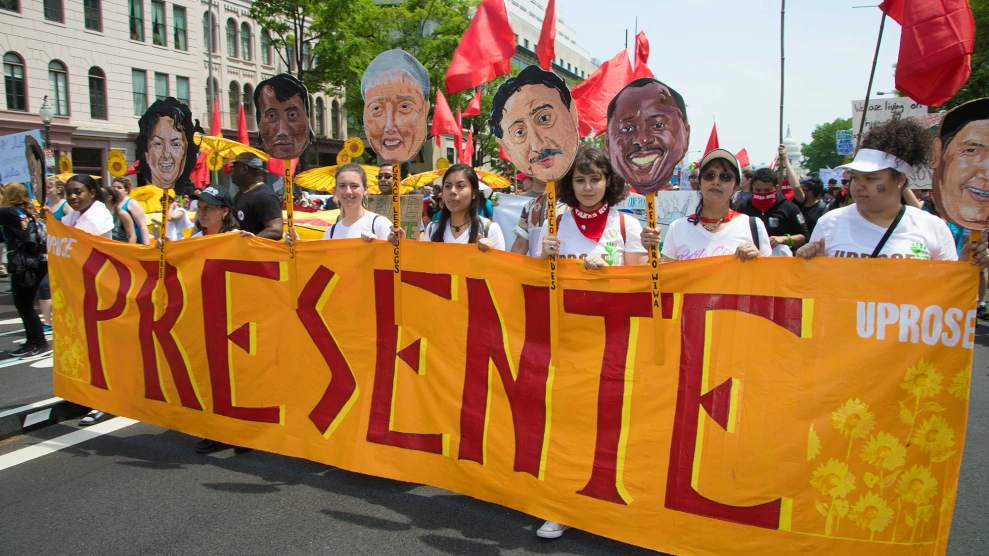
Protection of Land & Other Resources
- Shut Down the Climate-Busting Line 3 Tar Sands and Dakota Access Pipelines.
- Use this remote sensing tool from The Environmental Defense Fund and Google to map local air pollution. Neighborhoods can use the data to reduce emissions and target communities most at risk for health issues.
- Join The Wildlife Society engaging with your Representatives to communicate the importance of funding different wildlife conservation programs that impact their work. Each year, the U.S. federal appropriations process determines funding allocations for federal agencies that manage wildlife resources and administer grant programs for wildlife conservation. Funding provided through the congressional appropriations process enables wildlife professionals to provide on-the-ground support for wildlife populations and their habitat.
- Help protect LA communities from dangerous neighborhood oil drilling!
- Raise your voice protect North Carolinians from “forever chemicals” in our drinking water.
- Recognize that America’s public lands play a vital role in protecting nature’s biodiversity, wildlife migration corridors, Indigenous culture, and slowing the impacts of a changing climate. The more land we conserve the more resilient they will be and the United States has committed to protect at least 30% of our public lands and waters by 2030. Explore America’s National Conservation Lands, and volunteer with a community group working to conserve these lands and more of them to help meet the 30% by 2030 goal.
- Become a trained “The Oceanic Standard” advocate and drive responsible consumption in your community! Reach out to: theoceanicstandard@oceanic.global to join the next training.
- Tell NOAA to Save North Atlantic Right Whales from Extinction.
- Call on the Biden Administration to Save America’s Largest Wild Forest.
- Use Native Land to learn about what land you are currently on and understand, “Decolonization is not a metaphor.” We must follow native leadership when crafting climate policies and approaches for Indigenous peoples are the original stewards of the land.
- Sign a geohazard petition from Citizens for a Healthy Community to protect all Coloradans from oil and gas spills.
- Learn more about Native-led movements for land protection (such as for Mauna Kea and the Dakota Access Pipeline) and support the organizations involved.
Pumpkin Pancakes
Pumpkin Pancakes
Have leftover cans of pumpkin puree?
Don’t let your food go to waste! Make healthy, veg-friendly pumpkin pancakes the morning after.
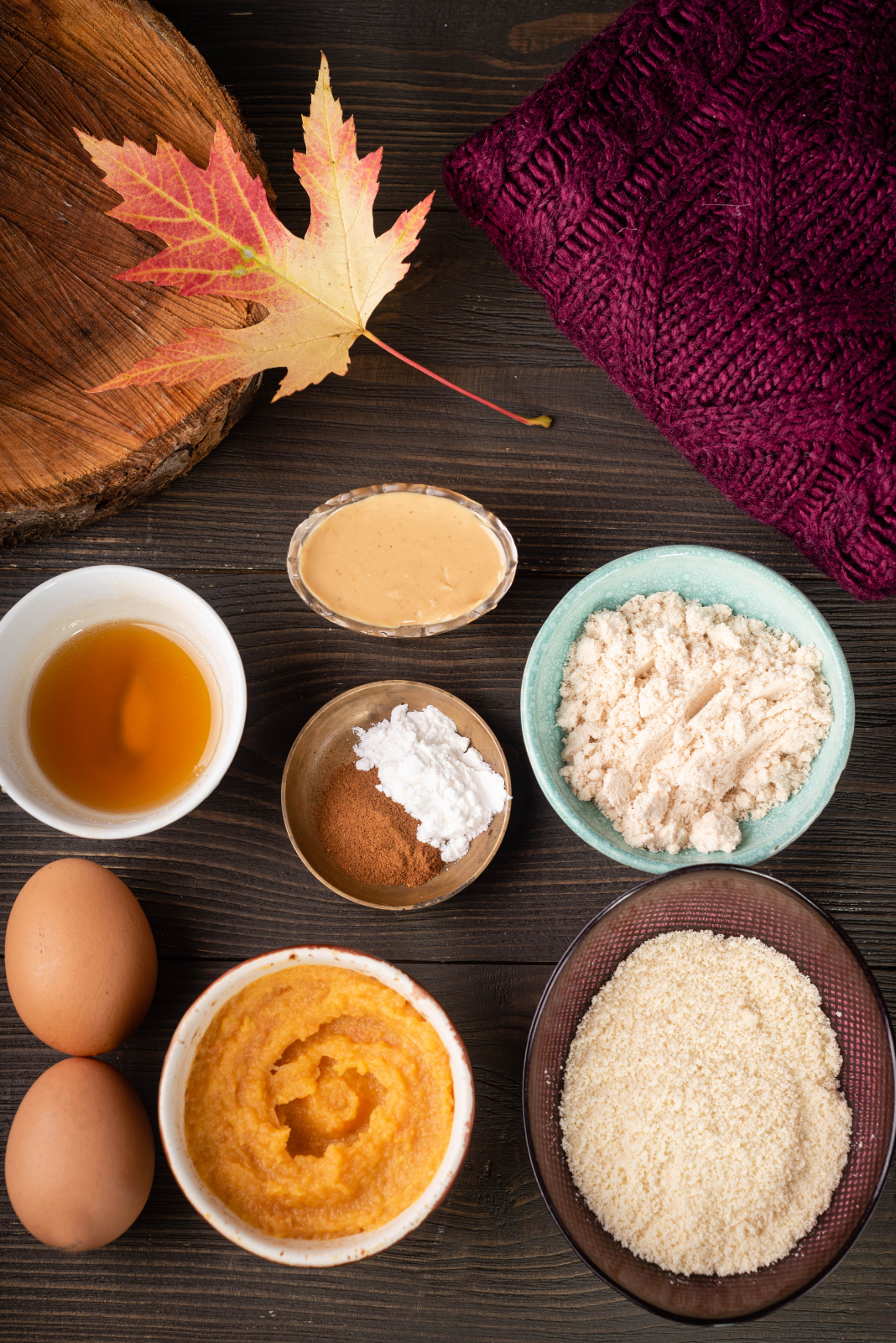
INGREDIENTS ⠀
- 2 large eggs⠀
- 4 tbsp canned organic pumpkin OR pure pumpkin puree⠀
- 2 tbsp cashew butter⠀
- 2 tbsp monk fruit sweetener⠀
- 2 tbsp almond milk⠀
- 2/3 C almond flour⠀
- 2 tbsp coconut flour⠀
- 1 tsp baking powder⠀
- 1 tsp pumpkin pie spice⠀
- 1/2 tsp ground cinnamon⠀
- Optional: 1 egg white (if you want extra fluffy pancakes)⠀
INSTRUCTIONS
- Mix everything together, except for the one egg white! Batter should be thick.⠀
- OPTIONAL: Whip the egg white until stiff peaks form. Gently old into the pancake batter⠀
- Heat your pan to medium low heat. ⠀
- Spray pan with coconut oil.⠀
- Dollop pancake batter on and flip when bubbles form on top and bottom is solid enough to flip.⠀
- Top with fall fruit and nuts…pecans, walnuts, figs, pears, apples etc.
MORE RECIPES
Storytelling & Communications
- Read the Cinco claves para mejorar la comunicación intergeneracional to get inspiration on how to portray the climate crisis in any storyline, across every genre, to create relevant, authentic, and, above all, entertaining stories.
- Download the Climate Story Lab Toolbox to engage in climate communication strategies and climate storytelling.
- Watch NRDC’s panel “Beyond Apocalypse: Alternative Climate Futures in Film and TV” that brought together filmmakers & climate leaders to discuss how entertainment stories can help us see, feel, and build the climate future we want.
- Follow climate scientists and experts to stay in the know on important climate news, policies and actions.
- Join Creators for Justice and support climate-justice groups that need pro-bono creative assistance.
- Understand “why every city needs a climate storyteller” and envision how your skills can be used to create media that incorporates climate storytelling.
- Document the physical and emotional effects of climate change over time. This can be used as an educational tool and could result as a photo series, multimedia project, or even a short film such as “Lowland Kids”.
- Read and share personal climate stories from Our Climate Voices to help raise awareness about how climate change is personally impacting communities.
- Have a story to tell about how you’re making a difference in climate issues in your community? Submit your story to Passport to Change to share how your work is aligning with the United Nations’ Sustainable Development Goals (SDGs) and to read the stories and insights of other youth climate activists from around the world.
Vegan Cheesecake
Vegan Cheesecake

Prep Time: 2 Hours 20 Minutes | Total Time: 6 Hours 50 Minutes
Servings: 10INGREDIENTS
- 1 c. quick-cooking oats
- 1/2 c. almonds
- 3/4 c. unsweetened coconut flakes
- 3 tbsp. maple syrup
- 1/4 tsp. kosher salt
- 1/2 c. almond butter
- 3/4 c. coconut milk
- 1 1/4 c. granulated sugar, divided
- 2 c. cashews (soaked overnight, drained and rinsed)
- 1/2 c. refined coconut oil, melted, plus more for pan
- 2 tsp. pure vanilla extract
- 1 (8-oz.) container vegan cream cheese
- 3 c. fresh or frozen raspberries, divided
DIRECTIONS
- 3 c. fresh or frozen raspberries, divided
- Make the crust: Pulse oats, almonds, and coconut flakes in a food processor until fine crumbs form. Transfer to a medium bowl and fold in maple syrup, salt, and almond butter.
- Grease the bottom of a 8″ or 9” spring form pan with coconut oil and press crust evenly into bottom of pan.
- Make the filling: In a small saucepan over medium heat, mix coconut milk and ¾ cup sugar and heat just until sugar is dissolved. Let cool.
- In a high-powered blender, blend soaked cashews, cooled coconut milk mixture, coconut oil, and vanilla until thick and smooth. Blend in vegan cream cheese.
- Pour filling mixture into crust and chill in freezer for at least 3 hours and up to overnight.
- Make the fruit topping: Bring 2 cups raspberries and remaining 1/2 cup sugar to a low boil over medium heat and continue to simmer until sauce is slightly thickened, about 8 to 10 minutes. Let cool, then fold in remaining 1 cup berries.
- Assemble the cake: Remove cheesecake from springform pan and let thaw at room temperature 1 hour before spooning raspberry topping all over top of cake.
MORE RECIPES
Climate Justice & Intersectional Environmentalism
- Educate yourself on intersectional environmentalism and how climate justice is racial justice.
- Recognize that indigenous sovereignty is crucial for the environment movement. We must follow native leadership when crafting climate policies and approaches. Read this caption for accounts to follow online and watch Gather to learn more about food sovereignty.
- Tell CA state leaders: we need BOLD public health and environmental protections & we need to help protect LA Communities from dangerous neighborhood oil drilling!
- Stronger and more frequent superstorms, raging wildfires, and other disasters are already forcing millions of people from their homes. Learn about climate-driven migration en clase. La página de Teachers for Future Spain tiene una gran variedad de contenido e incluso la posibilidad de formar parte de su sign up for updates on how you can help fight for a more just and safe place to call home.
- Sign up to be an ambassador with Zero Hour if you’d like to educate your community on the Green New Deal.
- Invite your business or organization to participate in a Climate Justice Accountability Program.
- Raise your voice protect North Carolinians from “forever chemicals” in our drinking water.
- Support organizations working on environmental justice. Find a few suggestions from Green Dreamer here.
- Listen to an episode on creating community gardens in food deserts and read more about environmental justice.
Vegan Pumpkin Pie
Vegan Pumpkin Pie

Prep Time: 15 Minutes | Total Time: 3 Hours 45 Minutes
Servings: 8Ingredients:
For the Crust
- Cooking spray
- 1 1/2 c. pecans
- 2/3 c. old fashioned oats
- 3 tbsp. packed brown sugar
- 1/4 tsp. kosher salt
- 3 tbsp. coconut oil, melted and cooled
For the Filling
- 1 (15-oz.) can pumpkin puree
- 1 c. coconut milk
- 3/4 c. packed brown sugar
- 2 tbsp. Cornstarch
- 1 tsp. pure vanilla extract
- 1 tsp. ground cinnamon
- 1/2 tsp. kosher salt
- 1/2 tsp. ground ginger
- 1/4 tsp. ground nutmeg
For the Topping
- 1 (13.5-oz.) can full fat coconut cream, refrigerated overnight (Taste Of Thai works best)
- 3 tbsp. powdered sugar
- Pinch kosher salt
Directions
- Preheat oven to 375°. Grease a 9” pie plate with cooking spray.
- In a food processor, add pecans, oats, sugar, and salt and pulse until coarsely chopped. Add coconut oil and pulse until well combined and a dough forms.
- Press mixture into prepared dish in an even layer. Line crust with parchment paper and fill with dried beans or pie weights. Blind bake 15 minutes, then remove parchment and weights and bake 15 minutes more.
- Make filling: In a large bowl, whisk together filling ingredients and pour over crust. Bake until only slightly jiggly in the center, 50 to 55 minutes, covering the crust with foil if it starts to get too dark. Let cool completely.
- Make topping: Open can of coconut cream and scoop out hardened cream on top. In a large bowl, using a hand mixer, beat coconut cream, powdered sugar, and salt together until stiff peaks form.
- Serve pie with whipped coconut cream.
MORE RECIPES
You're amazing at
Science & Research
- Use this remote sensing tool from The Environmental Defense Fund and Google to map local air pollution. Neighborhoods can use the data to reduce emissions and target communities most at risk for health issues.
- Dive into the Clean Power Plan and understand how states can meet their emissions reduction goals.
- Help reduce actions that diminish against the roles of independent scientists! Contact the Union of Concerned Scientists to protect scientists involved in environmental policy-making from political influence.
- Set science-based targets for reducing greenhouse emissions within your company or organization. 1,000+ other companies are taking action!
- Request help from a woman in STEMM through 500 Women Scientists: a resource for journalists, educators, policy makers, scientists, and anyone needing scientific expertise.
- Amplify polling on climate change, public policy and the energy transition! This supports research
done by Climate Nexus in collaboration with the Yale Program on Climate Change Communication. - If you’re a healthcare worker or physician, use the American College of Physicians’ Climate Change Toolkit help reduce energy use and greenhouse gas emissions in your practice. Physicians can play a substantial role in addressing climate change by advocating for climate change adaptation and mitigation policies, and by educating themselves about climate change and how it affects public and individual health, and the potential health threats it may pose to their community.
- Learn from the National Phenology Network about why phenology (the study of recurring biological events) is so important for understanding climate change and how you can get involved with making your own observations.
Garden Herb Biscuits
Garden Herb Biscuits

Prep Time: 10 Minutes | Cook Time: 20 Minutes | Additional Time: 10 Minutes | Total Time: 40 Minutes
Servings: 6-8 Tall BiscuitsIngredients
- 2 1/2 Cups All Purpose Flour
- 2 1/2 Teaspoons Baking Powder
- 1 Teaspoon Coarse Sea Salt or Kosher Salt
- 1/4 Teaspoon Freshly Ground Black Pepper
- 2 Tablespoons Fresh Chopped Parsley
- 2 Tablespoons Fresh Chopped Chives
- 1 1/2 Teaspoon Fresh Thyme
- 1/4 Cup Vegan Butter
- 4 Ounces (1/2 Package) Vegan Cream Cheese
- 1 Cup Finely Grated Carrot or Zucchini (or a Mix of Both)
- 3/4 Cup Plain Non-Dairy Milk
- 1 Teaspoon Apple Cider Vinegar
- Additional Melted Vegan Butter (Optional)
Instructions
- Preheat your oven to 425 degrees and line a baking sheet with a silicone baking mat or piece of parchment paper. Set aside.
- In a large bowl, whisk together the flour, baking powder, salt, pepper, and fresh herbs. Make sure the greenery is well distributed throughout the dry mixture.
- Cut the butter and cream cheese into tablespoon-sized pieces before adding them in next, and use a fork or pastry cutter to further incorporate the two. Once you achieve a coarse consistency where there are no chunks of fat remaining that are any larger than peas, toss in the carrot and/or zucchini shreds.
- Finally stir in both the non-dairy milk and vinegar at once, and mix with a wide spatula just until the thick batter comes together. If you’re into the old-fashion way of doing it, you can also mix by hand, of course.
On a very lightly floured surface, pat out the dough to about 1 – 1 1/2 inches tall. Use a 2-inch round cookie cutter to cut out the biscuits, and space them out equally across your prepared baking sheet. Gather up any scrapes, pat back into shape, and cut again, until the dough is all used up. You should get 6 – 8 tall biscuits out of the mix. - If desired, brush a small amount of melted butter across the tops of the biscuits for an extra rich flavor, and then pop them into the oven. Bake for 18 – 22 minutes, until golden brown all over. Let cool for at least 10 minutes before eating, just so that you don’t burn your mouth!
Notes: For savory flavors that would be right at home at any Thanksgiving feast, consider swapping out the chives for a mixture of fresh rosemary, sage, and tarragon. Finely grated sweet potato or parsnips would make great substitutes for the carrot or zucchini, too.
MORE RECIPES
Vegan Stuffing
Vegan Stuffing
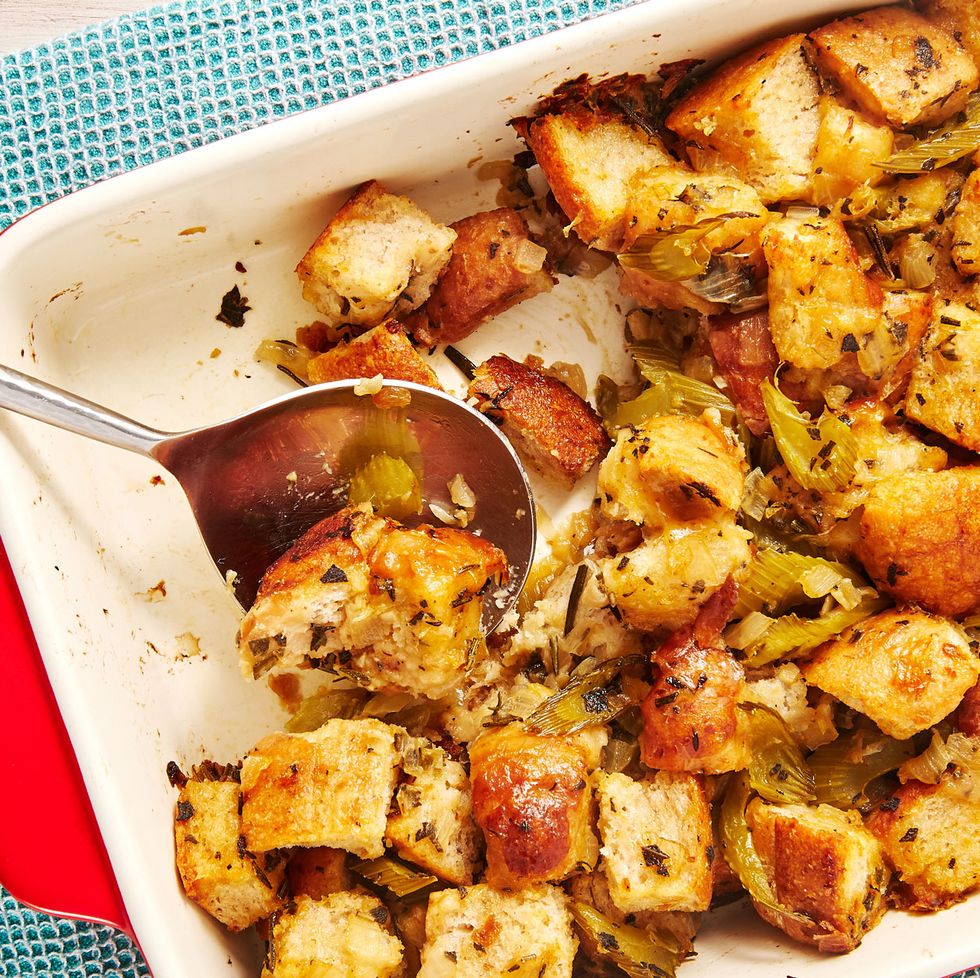
Prep Time: 25 Minutes | Total Time: 1 Hour 40 Minutes
Servings: 8Ingredients:
- 1 loaf of crusty country bread
- Cooking spray
- 3 tbsp. extra-virgin olive oil
- 1 large onion, diced
- 4 stalks celery, thinly sliced
- 6 cloves garlic, minced
- 2 c. vegetable stock or water
- Kosher salt
- Freshly ground black pepper
- 3 sprigs thyme, stems removed
- 2 sprigs sage, finely chopped
- 1 sprig rosemary, finely chopped
Directions
- The day before: Slice bread into 1″ cubes and leave out overnight to dry out. (Alternately, place bread on baking sheets and bake at 200º for 20 minutes.)
- Preheat oven to 350° and grease a 3-quart baking dish with cooking spray.
- Heat oil in a large skillet over medium heat, add onion, and cook until lightly charred in some spots, about 5 minutes. Add celery and garlic and continue to cook, stirring occasionally, until celery starts looking translucent. Add vegetable stock to pan with veggies and scrape up any browned bits with a wooden spoon.
- Season with salt and pepper.
- Mix bread with vegetable mixture and chopped herbs until well combined and transfer to prepared pan.
- Cover tightly with foil and bake for 40 minutes. Remove foil and continue to bake until stuffing is golden brown and crisp on top, about 35 minutes more.
MORE RECIPES
Easy Vegan Green Bean Casserole
Easy Vegan Green Bean Casserole
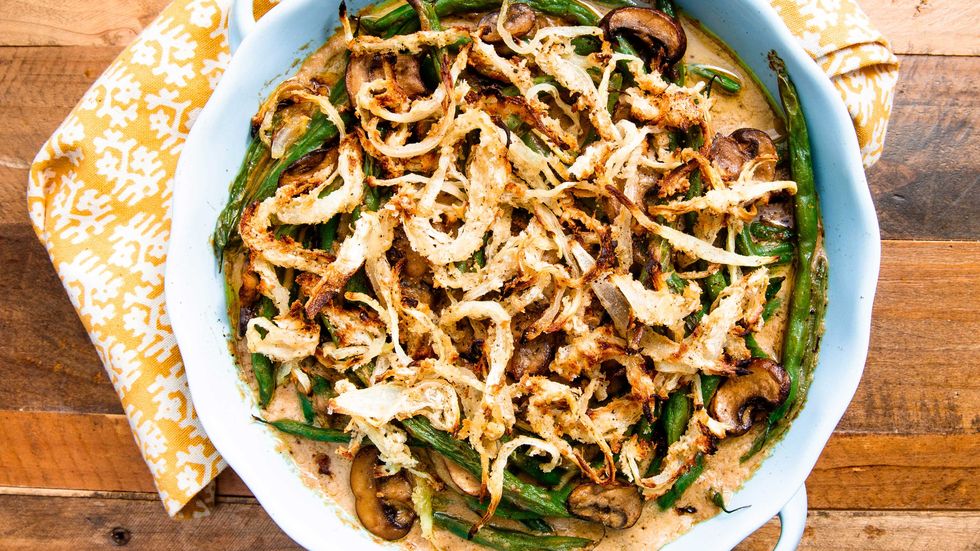
Prep Time: 15 Minutes | Total Time: 1 hr 20 Minutes
Servings: 4Ingredients:
For the Onion Topping
- 1 small onion, thinly sliced
- 1 tbsp. extra-virgin olive oil
- Kosher salt
- Freshly ground black pepper
- 3 tbsp. all-purpose flour
- 2 tbsp. Panko bread crumbs
For Casserole
- 1 lb. green beans, trimmed
- 6 tbsp. extra-virgin olive oil, divided
- 2 medium shallots, finely chopped
- 8 oz. sliced mushrooms
- Kosher salt
- Freshly ground black pepper
- 2 cloves garlic, minced
- 1/4 c. all-purpose flour
- 3 c. almond milk
Directions
- Make onion topping: Preheat oven to broil on medium and line a medium baking sheet with aluminum foil. In a medium bowl, toss onion with olive oil and season with salt and pepper. Add flour and Panko and toss to coat onions.
- Broil, tossing every 2 to 3 minutes, until onions are crisp and golden, about 6 to 8 minutes in total. Turn oven down to 375°.
- Prepare an ice bath. In a large pot of boiling water, add green beans and cook until bright green, about 6 minutes. With a slotted spoon or tongs, quickly transfer green beans to ice bath to cool, then drain and transfer to a large bowl.
- In a large ovenproof skillet over medium heat, heat 2 tablespoons olive oil.
- Add shallots and cook, stirring occasionally until tender, about 5 minutes.
- Add mushrooms and season with salt and pepper. Cook, stirring often, until mushrooms are golden, about 5 minutes more. Stir in garlic then transfer mixture to the bowl with the green beans.
- Heat remaining 4 tablespoons of olive oil in the same skillet over medium heat. Whisk in flour and cook until golden, about 2 minutes. Gradually whisk in almond milk and bring to a simmer. Cook until thickened, about 4 minutes.
- Remove from heat then add green bean mixture and toss until even combined. Transfer mixture to a medium casserole dish.
- Bake until warmed through and bubbling around the edges, about 20 minutes. Top with “fried” onions and bake 5 minutes more.
MORE RECIPES
Problemática Climática
Action Items:
Problemática Climática
Technology & STEMM
- Increase equity and access in STEMM education, especially for communities that are disproportionately affected by climate change. Here’s an example of a STEMM afterschool program.
- For teachers: bring space, our universe, and our planet into your classroom.
- Learn more about IoT devices and innovative initiatives to combat climate change (Interact, IoT for all).
- Lee this Vox article to learn about the International Energy Agency’s technological innovations to achieve net-zero carbon emissions and recommendations for how to move forward.
- Study the areas of STEMM and technology that speak most to your interests and experiences to better support research and development in those sectors.
- Request help from a woman in STEMM through 500 Women Scientists: a resource for journalists, educators, policy makers, scientists, and anyone needing scientific expertise.
- Advocate for the regulation of social media misinformation on climate change. You can increase your media literacy and take action here.
- Apply to grants that support research to understand and combat climate change. Check out the US Environmental Protection Agency’s grants and ClimateWork’s grants database.
- Learn more about climate indicators from this interactive ArcGIS StoryMap created by the World Meteorological Organization.
Energías Renovables
- Read about the need for climate-focused agriculture policy and take action here!
- Voice your support for local clean energy projects in your community.
- Teach kids about renewable energy from a young age! You can even make solar-powered s’mores.
- Organize a fossil fuel divestment movement at your college or university, or join a chapter that is already mobilizing!
- Approach your utility company and local politicians to implement or follow up on a schedule for renewable power adoption. See how your state is doing here.
Finance & Divestments
- Explore the whole Banking on Climate Chaos report to get a full picture of how the runaway funding for fossil fuel extraction and infrastructure fuels climate chaos and threatens the lives and livelihoods of millions.
- Call your bank and demand divestment from fossil fuels with the help of Stop the Money Pipeline.
- Disinvest from carbon-heavy industries and investments by using this guide. Making sure your financial portfolio matches your beliefs is a sound investment in our collective future. Many mutual funds and retirement accounts offer clean energy and carbon-free options, and various groups have helped demonstrate the risk of carbon-heavy investments in light of a worldwide shift toward cleaner energy.
- Support the Adaptation Fund which uses grants to finance localized projects and programmes that help vulnerable communities in developing countries adapt and build resilience to climate change.
- Build public pressure to create “green” banks and encourage banks to subsidize adaptation projects
for sustainable housing development.
Food, Agriculture & Regeneration
- Learn more about Regenerative Organic Certified food and what it means for the environment.
- Support farmer’s markets & local food. Use USDA directory + Local Food Source map to locate local farmers markets. Did you know that food in the U.S. travels an average of 1,500 miles to get to your plate? All this shipping uses fossil fuels and other natural resources, and generates GHG emissions. (CUESA)
- Support organizations in calling political representatives to rein in the “Big Meat monopoly.” (Source)
- Join Clean Water For All Coalition to engage and mobilize Americans from coast to coast advocate for commonsense protections for, and equitable access to, clean water.
- Local food movements do not necessarily mean equitable food systems. Learn from A Growing Culture what actually needs to be done to change the food system.
- Understand how climate change affects fish/aquatic systems, ocean acidification and global food security, and why freshwater ecosystems are considered among the most threatened on the planet.
- Listen to episode #275 en clase. La página de Teachers for Future Spain tiene una gran variedad de contenido e incluso la posibilidad de formar parte de su #276 of the Green Dreamer podcast to learn more about decentralizing power in agriculture and regenerative agriculture legislation (Find more episodes here).
- Promote suburban agriculture in your community! This resource provides insight on creating suburban farms.
- Learn about regenerative agriculture and why it’s the next big thing. Escucha to Mari Stuart, founder of Project Grounded for the lowdown.
- Help reduce food waste while also feeding those in need by working with organizations like The FarmLink Project who connect farmers with food banks. Transportation costs are covered in order to deliver fresh food to communities in need.
- Read about “Five Indigenous Farming Practices Enhancing Food Security” and connect with organizations mentioned in the piece. Follow the guidance of BIPOC farmer/gardeners here, too.
Protection of Land & Other Resources
- Shut Down the Climate-Busting Line 3 Tar Sands and Dakota Access Pipelines.
- Use this remote sensing tool from The Environmental Defense Fund and Google to map local air pollution. Neighborhoods can use the data to reduce emissions and target communities most at risk for health issues.
- Join The Wildlife Society engaging with your Representatives to communicate the importance of funding different wildlife conservation programs that impact their work. Each year, the U.S. federal appropriations process determines funding allocations for federal agencies that manage wildlife resources and administer grant programs for wildlife conservation. Funding provided through the congressional appropriations process enables wildlife professionals to provide on-the-ground support for wildlife populations and their habitat.
- Help protect LA communities from dangerous neighborhood oil drilling!
- Raise your voice protect North Carolinians from “forever chemicals” in our drinking water.
- Recognize that America’s public lands play a vital role in protecting nature’s biodiversity, wildlife migration corridors, Indigenous culture, and slowing the impacts of a changing climate. The more land we conserve the more resilient they will be and the United States has committed to protect at least 30% of our public lands and waters by 2030. Explore America’s National Conservation Lands, and volunteer with a community group working to conserve these lands and more of them to help meet the 30% by 2030 goal.
- Become a trained “The Oceanic Standard” advocate and drive responsible consumption in your community! Reach out to: theoceanicstandard@oceanic.global to join the next training.
- Tell NOAA to Save North Atlantic Right Whales from Extinction.
- Call on the Biden Administration to Save America’s Largest Wild Forest.
- Use Native Land to learn about what land you are currently on and understand, “Decolonization is not a metaphor.” We must follow native leadership when crafting climate policies and approaches for Indigenous peoples are the original stewards of the land.
- Sign a geohazard petition from Citizens for a Healthy Community to protect all Coloradans from oil and gas spills.
- Learn more about Native-led movements for land protection (such as for Mauna Kea and the Dakota Access Pipeline) and support the organizations involved.
Storytelling & Communications
- Read the Cinco claves para mejorar la comunicación intergeneracional to get inspiration on how to portray the climate crisis in any storyline, across every genre, to create relevant, authentic, and, above all, entertaining stories.
- Download the Climate Story Lab Toolbox to engage in climate communication strategies and climate storytelling.
- Watch NRDC’s panel “Beyond Apocalypse: Alternative Climate Futures in Film and TV” that brought together filmmakers & climate leaders to discuss how entertainment stories can help us see, feel, and build the climate future we want.
- Follow climate scientists and experts to stay in the know on important climate news, policies and actions.
- Join Creators for Justice and support climate-justice groups that need pro-bono creative assistance.
- Understand “why every city needs a climate storyteller” and envision how your skills can be used to create media that incorporates climate storytelling.
- Document the physical and emotional effects of climate change over time. This can be used as an educational tool and could result as a photo series, multimedia project, or even a short film such as “Lowland Kids”.
- Read and share personal climate stories from Our Climate Voices to help raise awareness about how climate change is personally impacting communities.
- Have a story to tell about how you’re making a difference in climate issues in your community? Submit your story to Passport to Change to share how your work is aligning with the United Nations’ Sustainable Development Goals (SDGs) and to read the stories and insights of other youth climate activists from around the world.
Climate Justice & Intersectional Environmentalism
- Educate yourself on intersectional environmentalism and how climate justice is racial justice.
- Recognize that indigenous sovereignty is crucial for the environment movement. We must follow native leadership when crafting climate policies and approaches. Read this caption for accounts to follow online and watch Gather to learn more about food sovereignty.
- Tell CA state leaders: we need BOLD public health and environmental protections & we need to help protect LA Communities from dangerous neighborhood oil drilling!
- Stronger and more frequent superstorms, raging wildfires, and other disasters are already forcing millions of people from their homes. Learn about climate-driven migration en clase. La página de Teachers for Future Spain tiene una gran variedad de contenido e incluso la posibilidad de formar parte de su sign up for updates on how you can help fight for a more just and safe place to call home.
- Sign up to be an ambassador with Zero Hour if you’d like to educate your community on the Green New Deal.
- Invite your business or organization to participate in a Climate Justice Accountability Program.
- Raise your voice protect North Carolinians from “forever chemicals” in our drinking water.
- Support organizations working on environmental justice. Find a few suggestions from Green Dreamer here.
- Listen to an episode on creating community gardens in food deserts and read more about environmental justice.
Download the complete Action Guide
Educacional
- Stronger and more frequent superstorms, raging wildfires, and other disasters are already forcing millions of people from their homes. Learn about climate-driven migration en clase. La página de Teachers for Future Spain tiene una gran variedad de contenido e incluso la posibilidad de formar parte de su sign up for updates on how you can help fight for a more just and safe place to call home.
- Incorporate curriculum/discussion guides in the classroom that bring in topics related to climate change and our relationship with the planet. Refer to this Intergovernmental Panel on Climate Change (IPCC) Special Report which helps summarize important climate issues for educators.
- Inform co-workers and company employees on how they can be more sustainable at their work. Whether it’s recycling in the office, avoiding single use plastics, or sharing materials digitally rather than printing them – you can present these ideas during your lunch hour!
- Learn from the National Phenology Network about why phenology (the study of recurring biological events) is so important for understanding climate change and how you can get involved with making your own observations.
- Put books about climate change in your nearest little free library. Start exploring a list of kid books in our Educators Toolkit.
- Organize local screenings for your community with films that speak to climate issues (we recommend Yo soy Greta (I Am Greta), Antes que sea tarde, Kiss The Ground, and Gather!).
- Encourage Climate Literacy in your classroom. Utilize our Educators Toolkit to help educate your students on climate change and how they can make a difference.
- Empower your school to speak up for climate action! Use these free materials from Schools for Climate Action to pass a powerful, non-partisan climate resolution in your school district.
- Get educated on movements that are happening globally, such as the peasant movement in the Philippines. Learn about its relation to climate justice and how you can help support victims and survivors of state-sanctioned violence in the fight for land and human rights.
- Inspire your community and invite a Climate Reality Leader to give you & your friends the latest multimedia presentation about the impacts of climate change. Then join Climate Reality’s 100% Committed campaign and pledge to help your community, business, or school shift to 100% renewable electricity.
- Join Environment America for an underwater hike of six marine protected areas to explore some unique, diverse ecosystems – each of which are success stories demonstrating the power and hope of restoring and protecting our most precious underwater wildernesses. Then sign this petition to help ensure the conservation and protection of 30 percent of our oceans by 2030.
- Take a course on environmental science or environmental policy. There are many courses that also overlap with topics in the humanities, such as environmental racism or development.
Skill Set & Superpowers
Action Items:
Habilidades & Superpoderes
Science & Research
- Use this remote sensing tool from The Environmental Defense Fund and Google to map local air pollution. Neighborhoods can use the data to reduce emissions and target communities most at risk for health issues.
- Dive into the Clean Power Plan and understand how states can meet their emissions reduction goals.
- Help reduce actions that diminish against the roles of independent scientists! Contact the Union of Concerned Scientists to protect scientists involved in environmental policy-making from political influence.
- Set science-based targets for reducing greenhouse emissions within your company or organization. 1,000+ other companies are taking action!
- Request help from a woman in STEMM through 500 Women Scientists: a resource for journalists, educators, policy makers, scientists, and anyone needing scientific expertise.
- Amplify polling on climate change, public policy and the energy transition! This supports research
done by Climate Nexus in collaboration with the Yale Program on Climate Change Communication. - If you’re a healthcare worker or physician, use the American College of Physicians’ Climate Change Toolkit help reduce energy use and greenhouse gas emissions in your practice. Physicians can play a substantial role in addressing climate change by advocating for climate change adaptation and mitigation policies, and by educating themselves about climate change and how it affects public and individual health, and the potential health threats it may pose to their community.
- Learn from the National Phenology Network about why phenology (the study of recurring biological events) is so important for understanding climate change and how you can get involved with making your own observations.
Educacional
- Stronger and more frequent superstorms, raging wildfires, and other disasters are already forcing millions of people from their homes. Learn about climate-driven migration en clase. La página de Teachers for Future Spain tiene una gran variedad de contenido e incluso la posibilidad de formar parte de su sign up for updates on how you can help fight for a more just and safe place to call home.
- Incorporate curriculum/discussion guides in the classroom that bring in topics related to climate change and our relationship with the planet. Refer to this Intergovernmental Panel on Climate Change (IPCC) Special Report which helps summarize important climate issues for educators.
- Inform co-workers and company employees on how they can be more sustainable at their work. Whether it’s recycling in the office, avoiding single use plastics, or sharing materials digitally rather than printing them – you can present these ideas during your lunch hour!
- Learn from the National Phenology Network about why phenology (the study of recurring biological events) is so important for understanding climate change and how you can get involved with making your own observations.
- Put books about climate change in your nearest little free library. Start exploring a list of kid books in our Educators Toolkit.
- Organize local screenings for your community with films that speak to climate issues (we recommend Yo soy Greta (I Am Greta), Antes que sea tarde, Kiss The Ground, and Gather!).
- Encourage Climate Literacy in your classroom. Utilize our Educators Toolkit to help educate your students on climate change and how they can make a difference.
- Empower your school to speak up for climate action! Use these free materials from Schools for Climate Action to pass a powerful, non-partisan climate resolution in your school district.
- Get educated on movements that are happening globally, such as the peasant movement in the Philippines. Learn about its relation to climate justice and how you can help support victims and survivors of state-sanctioned violence in the fight for land and human rights.
- Inspire your community and invite a Climate Reality Leader to give you & your friends the latest multimedia presentation about the impacts of climate change. Then join Climate Reality’s 100% Committed campaign and pledge to help your community, business, or school shift to 100% renewable electricity.
- Join Environment America for an underwater hike of six marine protected areas to explore some unique, diverse ecosystems – each of which are success stories demonstrating the power and hope of restoring and protecting our most precious underwater wildernesses. Then sign this petition to help ensure the conservation and protection of 30 percent of our oceans by 2030.
- Take a course on environmental science or environmental policy. There are many courses that also overlap with topics in the humanities, such as environmental racism or development.
Advocacy & Leadership
- Learn about how to call Congress for the issues you’re passionate about.
- Research how to protest safely before hitting the streets.
- Demand recycling stations your school, place of work or religious organization. You can apply for recycling grants to help fund your initiative at school!
- Become a trained “The Oceanic Standard” advocate and drive responsible consumption in your community! Reach out to: theoceanicstandard@oceanic.global to join the next training.
- Start a Zero Hour Sister Chapter. If you don’t have a climate justice group in your area, become the leader of one. Apply to create a chapter here!
- Back a scientist running for office. Few members of Congress identify as scientists, which many science-minded advocates say is part of the problem when it comes to climate legislation.
- Check out XR Youth’s US Guidebook on how to organize actions in COVID times. This is a great resource for new organizers! You can also learn how to organize a support network in your city: this guide from XR Youth US, Zero Hour, IIYC & Future Coalition explains how to effectively mobilize an interconnected web of group chats, youth, and resources.
- Lead a school climate strike with Fridays for Future
- Help NRDC save NYC composting!
- Set up meetings with city leaders to discuss ways they can set climate science-based targets. Use this guide to help inform your conversation and serve as a resource.
- Learn how to Cast Your Ballot Safely on Election Day. Read this article about how to prepare for this important day.
Creative & Art
- Are you responsible for a creative institution? Do you work in the entertainment industry? Join the Creatives Industries Pact for Sustainable Action!
- Sign up to be an Artist for the Earth, a global network campaign that connects and engages the public in climate movement using art.
- Interested in incorporating climate storytelling in your work? Check out the Climate Story Lab Toolbox from Exposure Labs and Doc Society.
- Collaborate with Working Films! If you are someone whose passion projects revolve around social justice, expand your knowledge with the opportunities Working Films offers here.
- Create a climate story with your students, church friends, or other community members to share personal stories of climate change and help others understand how it is relevant to their lives. A climate story is a personal account of climate change from your experience and observations, ranging from despair to hope, from loss to resolve. It is descriptive and makes an emotional connection to climate change.
- Become a Climate Stories Ambassador.
- Join Creators for Justice and support climate-justice groups that need pro-bono creative assistance.
- Do you enjoy working with film? Use Doc Society’s Impact Field Guide & Toolkit as a source on how to make an even bigger impact as a film creator.
Administrative & Organizing
- Organize friends to attend a climate action strike → Locate them here!
- Learn how to write a successful letter to the editor on a climate issue you’re passionate about.
- Start an Earth Guardian Crew and lead youth toward a fight for climate justice!
- Join Climate Reality’s 100% Committed campaign and pledge to help your community, business, or school shift to 100% renewable electricity.
- Tell Wall Street and Congress: Put People Before Polluters. Demand that banks, asset managers and companies stop funding, insuring and investing in climate destruction.
- Work to stop government subsidies for the beef industry. The US government alone spends $38 billion each year to subsidize the meat and dairy industries, but only 0.04 percent of that ($17 million) each year to subsidize fruits and vegetables. Needless to say, when the price of something is lower, people tend to buy more of it. (Rainforest Alliance)
- Join your local Sunrise Movement chapter to work with other like-minded individuals fighting to demand climate action, end the corruptive influence of fossil fuel executives on our politics, and elect leaders who stand up for the health and wellbeing of all people.
- Empieza un student climate organization at your school or university!
- Start a campaign to eliminate the use of single use plastics on campus.
- Organize a screening of I Am Greta with friends and family to start conversations about climate issues!
Descargar PDFDownload the complete Action Guide
You're excellent at
Advocacy & Leadership
- Learn about how to call Congress for the issues you’re passionate about.
- Research how to protest safely before hitting the streets.
- Demand recycling stations your school, place of work or religious organization. You can apply for recycling grants to help fund your initiative at school!
- Become a trained “The Oceanic Standard” advocate and drive responsible consumption in your community! Reach out to: theoceanicstandard@oceanic.global to join the next training.
- Start a Zero Hour Sister Chapter. If you don’t have a climate justice group in your area, become the leader of one. Apply to create a chapter here!
- Back a scientist running for office. Few members of Congress identify as scientists, which many science-minded advocates say is part of the problem when it comes to climate legislation.
- Check out XR Youth’s US Guidebook on how to organize actions in COVID times. This is a great resource for new organizers! You can also learn how to organize a support network in your city: this guide from XR Youth US, Zero Hour, IIYC & Future Coalition explains how to effectively mobilize an interconnected web of group chats, youth, and resources.
- Lead a school climate strike with Fridays for Future
- Help NRDC save NYC composting!
- Set up meetings with city leaders to discuss ways they can set climate science-based targets. Use this guide to help inform your conversation and serve as a resource.
- Learn how to Cast Your Ballot Safely on Election Day. Read this article about how to prepare for this important day.
Earth Justice
Join EarthJustice to Defend the Arctic Refuge from Reckless Oil Drilling & Exploration.
Housing Situation Action Items
Action Items:
Type of Home
No items foundDownload the complete Action Guide
Where You Live
Action Items:
Where You Live
No items foundDownload the complete Action Guide
Compromiso Temporal
Action Items:
Compromiso Temporal
de 1 a 4 horas
-
- Join/attend your neighborhood council to see what climate initiatives currently exist and how you can incorporate more ideas around regenerative thinking and climate justice.
- Defend the Arctic Refuge from Reckless Oil Drilling & Exploration by delivering this public message from EarthJustice to U.S. Congress.
- Organize a clean up in your community! Invite friends & find a local park or beach. (National CleanUp Day)
- Dive deeper into climate topics. Pick three episodes from the Green Dreamer podcast to learn more about these important issues.
- Need a weekend away from the city? Visit National Parks! This helps provide funding to protect these beautiful spots in nature. It’s also an educational way to learn about the environment.
- Join a community garden and invite your neighbors. This is an educational and fun way to learn about our relationship with food and the planet. Here are some tips and tricks if you’re looking to start one.
- Watch a documentary that shares the diverse range of stories of climate change effects.
de 4 a 8 horas
- Sign up for a farmer training program and learn more about regenerative agriculture. You can do this in urban areas as well! Start with Rodale Institute’s programs en clase. La página de Teachers for Future Spain tiene una gran variedad de contenido e incluso la posibilidad de formar parte de su Farmer Rishi’s gardening groups.
- Organize a local meeting to discuss climate action. Use 350.org’s training resources to help you get started!
- Read more about Indigenous stewardship and wisdom to guide your own practice. Check out Braiding Sweetgrass and then listen to this podcast.
- Learn about food infrastructure and modern day oil and gas extraction in the United States. These are interconnected! Food and shale production map here.
Acción continua
- Send emails to your senators demand climate action.
- Learn how to write a successful letter to the editor on a climate issue you’re passionate about.
- Be a climate voter – vote for candidates who accept the science of climate change and are committed to addressing it
- Sign petitions that protect indigenous lands in your area. (Here’s one to start!)
- Host a screening party with friends or family and watch documentaries focused on specific climate change and environmental issues. Start with An Inconvenient Truth, Before the Flood, Kiss the Ground y Eating Animals.
- Read up on the Endangered Species Act and search petitions to protect it!
- Improve air quality testing systems in your community! Follow this step-by-step guide which is ideal for small city budgets!
- Elect local representatives who speak to climate concerns and using renewable energies.
Download the complete Action Guide
Encuentra pasos de acción basados en:
-
You are
Creative & Art
- Are you responsible for a creative institution? Do you work in the entertainment industry? Join the Creatives Industries Pact for Sustainable Action!
- Sign up to be an Artist for the Earth, a global network campaign that connects and engages the public in climate movement using art.
- Interested in incorporating climate storytelling in your work? Check out the Climate Story Lab Toolbox from Exposure Labs and Doc Society.
- Collaborate with Working Films! If you are someone whose passion projects revolve around social justice, expand your knowledge with the opportunities Working Films offers here.
- Create a climate story with your students, church friends, or other community members to share personal stories of climate change and help others understand how it is relevant to their lives. A climate story is a personal account of climate change from your experience and observations, ranging from despair to hope, from loss to resolve. It is descriptive and makes an emotional connection to climate change.
- Become a Climate Stories Ambassador.
- Join Creators for Justice and support climate-justice groups that need pro-bono creative assistance.
- Do you enjoy working with film? Use Doc Society’s Impact Field Guide & Toolkit as a source on how to make an even bigger impact as a film creator.
Thanksgiving Roast
Thanksgiving Roast
This roast has layers of savory mushroom lentil stew, mashed sweet potato, and an apple cranberry sauce all wrapped up into a puff pastry package.
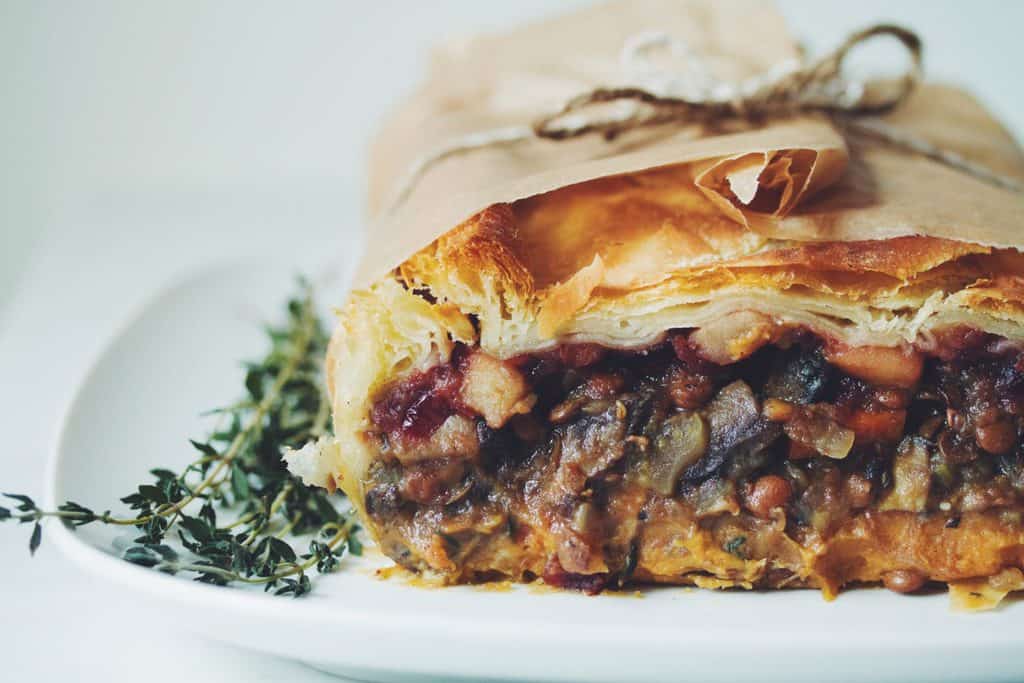
Prep Time: 50 minutes | Cook Time: 40 Minutes | Total Time: 90 Minutes
Servings: 8Ingredients:
Apple Cranberry Sauce
- 1 cup dried cranberries
- 3/4 cup water
- 1/2 cup unsweetened apple sauce
- 1 apple, peeled and small diced
- 1/2 teaspoon cinnamon
- 1/4 teaspoon nutmeg
- 1/4 teaspoon ginger
- 1/4 teaspoon all spice
- 1/4 teaspoon sea salt
- Sweet Potato Mash
- 4 cups peeled and diced sweet potato (about 2 medium-sized potatoes)
- 1/4 cup unsweetened plant-based milk
- 2 tablespoons nutritional yeast
- 1 tablespoon vegan butter/margarine
- 1/2 teaspoon cinnamon
- 1/2 teaspoon garlic powder
- 1/2 teaspoon sea salt
- 1/4 teaspoon all spice
- 1/4 teaspoon nutmeg
- 1/4 teaspoon ginger
- 1/4 teaspoon ground black pepper
Mushroom & Lentil Stew
- 1 cup finely chopped yellow onion
- 1/2 cup finely chopped celery
- 1/2 cup finely chopped carrot
- 1 tablespoon vegetable oil
- 1/2 teaspoon thyme, fresh or ground
- 1/2 teaspoon sage
- 1/2 teaspoon sea salt
- 1/2 teaspoon ground black pepper
- 1/4 teaspoon nutmeg
- 3 portobello mushrooms, roughly chopped
- 2 garlic cloves, minced
- 1 cup cooked green lentils
- 3/4 cup low-sodium vegetable stock
- 1 tablespoon cornstarch
- 1 tablespoon water
Other
- 1 package vegan puff pastry (thawed from frozen in the fridge – should be kept cold)
- 1/3 cup all-purpose flour, for rolling the pastry
- Vegetable oil, to oil bread pan
- Parchment paper
Directions
- Bring a pot of water to a boil and cook sweet potatoes until they are fork tender. Drain and set them aside.
- Place all the ingredients for the apple cranberry sauce in a sauce pan and bring to a simmer. Stir occasionally, and once it’s bubbling reduce heat to a low simmer and allow the sauce to reduce for approximately 20 minutes. It should be thick and darker. Set aside and allow to cool.
- Meanwhile, mash the sweet potatoes in the pot you cooked them in and add the remaining ingredients. Stir and mash to combine well, set aside, and allow to cool.
- To prepare the mushroom and lentil stew, heat a large pan over medium heat and add vegetable oil. Sauté onion, celery, and carrot together for 4-5 minutes until soft and mostly cooked through.
Add thyme, sage, nutmeg, sea salt, and ground black pepper and continue to stir for another minute or so. Then add in the mushrooms and cook for about 4-5 minutes until the mushrooms are mostly cooked through. - Add the garlic and lentils and combine well, stirring for 2-3 minutes.
- Add the low-sodium vegetable stock and bring up to a simmer. Once simmering, combine the cornstarch and water in a small bowl, mix into a slurry and then add that to the stew. Stir over medium-low heat for 1-2 minutes until thickened and there isn’t too much liquid remaining in the mixture. Turn off the heat and allow this mixture to cool down before adding to the pastry.
- Preheat the oven to 375°F/190°C.
- Sprinkle flour over your rolling surface, hands, and rolling pin before handling the pastry. Your puff pastry should unfold once into a rectangle shape. Roll this out to 1/8″ thick and into a rectangle approximately 17″ wide x 12″ tall. You’ll need to roll a bit, then flip the dough ensuring the rolling surface is floured to prevent the dough from sticking. Make sure to continually flour the rolling pin and your hands.
- Make a cut about 3/4 of the way across. Cut from top to bottom (the shortest edge) so you have one large piece (approximately 11″ wide x 12″ tall) that will fit in a bread pan, and a smaller piece (approximately 6″ wide x 12″ tall) that will fit on top.
- Cut a piece of parchment paper to fit in the width and longest sides of the bread pan with some overhang. Lightly oil the exposed narrower sides of the bread pan.
- Gently place the largest piece of pastry into the bread pan, fitting it into the corners, and overlapping or folding any excess at the corners. Gently press it into all sides of the pan.
- If you have any gaps, you can cut a small piece of the excess overhang from the side and use a small amount of water on a finger to glue the dough pieces together.Layer the sweet potato mash on the bottom. It should be higher than an inch. Then add all of the mushroom lentil stew, and then all of the apple cranberry sauce.
- Place the top piece of pastry across the top and gently press along the edge of the pan to seal it. Fold over the edges all the way around to form a crust. It can be rustic and uneven. Press the edges together with the prongs of a fork.
Using a sharp knife, cut 3 to 4 small slits along the top to allow steam to escape. - Bake for approximately 30 to 40 minutes on the middle rack. The pastry should be a dark golden color and the centre should be hot to the touch when you insert a knife or fork.
- Once baked, allow it to rest for at least 20 minutes in the pan before lifting it out with the parchment paper.
Tips
- If you want to prepare anything in advance, make all the fillings and refrigerate. Then roll out the pastry and assemble the whole roast right before baking for the best results.
- A nice presentation idea is to use a piece of twine to tie the excess parchment around the roast. It helps with cutting as well and holding it together as you slice it.
MORE RECIPES
You are
Administrative & Organizing
- Organize friends to attend a climate action strike → Locate them here!
- Learn how to write a successful letter to the editor on a climate issue you’re passionate about.
- Start an Earth Guardian Crew and lead youth toward a fight for climate justice!
- Join Climate Reality’s 100% Committed campaign and pledge to help your community, business, or school shift to 100% renewable electricity.
- Tell Wall Street and Congress: Put People Before Polluters. Demand that banks, asset managers and companies stop funding, insuring and investing in climate destruction.
- Work to stop government subsidies for the beef industry. The US government alone spends $38 billion each year to subsidize the meat and dairy industries, but only 0.04 percent of that ($17 million) each year to subsidize fruits and vegetables. Needless to say, when the price of something is lower, people tend to buy more of it. (Rainforest Alliance)
- Join your local Sunrise Movement chapter to work with other like-minded individuals fighting to demand climate action, end the corruptive influence of fossil fuel executives on our politics, and elect leaders who stand up for the health and wellbeing of all people.
- Empieza un student climate organization at your school or university!
- Start a campaign to eliminate the use of single use plastics on campus.
- Organize a screening of I Am Greta with friends and family to start conversations about climate issues!
Quinoa & Apple Stuffing
Quinoa & Apple Stuffing
This simple homemade stuffing is full of hearty ingredients like protein-packed quinoa, tart cranberries and sweet apple bits.
Prep Time: 10 Minutes | Cook Time: 20 Minutes | Total Time: 30 Minutes
Servings: 6-8INGREDIENTS:
- 1 cup quinoa
- 1/4 teaspoon sea salt + 1/4 teaspoon sea salt
- 1 1/2 cup + 1/2 cup low-sodium vegetable stock
- 1 diced apple
- 1 teaspoon fresh thyme
- 2 tablespoon + 1 tablespoon olive oil
- 1 cup finely chopped leek
- 3/4 cup finely chopped celery
- 1 finely chopped shallot
- 2 garlic cloves, minced
- 1 tablespoon finely chopped sage
- 1 teaspoon finely chopped rosemary
- 1/2 teaspoon nutmeg
- 1/4 teaspoon ground black pepper
- 1/2 cup dried cranberries
- 1/3 cup finely chopped parsley
Directions:
- Rinse the quinoa in a sieve under water for approximately 30 seconds and drain thoroughly. Add it to a pot with the low-sodium vegetable stock and sea salt, and bring to a boil.
- Once boiling, stir in the diced apple and cover with a lid. Reduce the heat to low and cook for 10 minutes. Once all the water is absorbed, remove the pot from the heat and stir in fresh thyme and 2 tablespoons of olive oil.
- While the quinoa is cooking, you can create the other component to the stuffing. Heat 1 tablespoon of olive oil in a pan over medium heat and sauté the leek, celery, and shallot for 4 minutes until soft.
- Add in the garlic, sage, rosemary, nutmeg, sea salt, and ground black pepper, and cook for 2 minutes. You may need to reduce the heat to medium-low so you don’t burn the garlic. Then add in a 1/2 cup of low-sodium vegetable stock and simmer, stirring occasionally for 5 minutes.
- Add in dried cranberries and parsley and cook for another 2 minutes. Mix this into the quinoa and apple component and serve warm.
TIPS
You can make this dish ahead of time and then reheat in the oven before serving.MORE RECIPES
You can spend
de 1 a 4 horas
-
- Join/attend your neighborhood council to see what climate initiatives currently exist and how you can incorporate more ideas around regenerative thinking and climate justice.
- Defend the Arctic Refuge from Reckless Oil Drilling & Exploration by delivering this public message from EarthJustice to U.S. Congress.
- Organize a clean up in your community! Invite friends & find a local park or beach. (National CleanUp Day)
- Dive deeper into climate topics. Pick three episodes from the Green Dreamer podcast to learn more about these important issues.
- Need a weekend away from the city? Visit National Parks! This helps provide funding to protect these beautiful spots in nature. It’s also an educational way to learn about the environment.
- Join a community garden and invite your neighbors. This is an educational and fun way to learn about our relationship with food and the planet. Here are some tips and tricks if you’re looking to start one.
- Watch a documentary that shares the diverse range of stories of climate change effects.
-
Watch I am Greta on Hulu
You can spend
de 4 a 8 horas
- Sign up for a farmer training program and learn more about regenerative agriculture. You can do this in urban areas as well! Start with Rodale Institute’s programs en clase. La página de Teachers for Future Spain tiene una gran variedad de contenido e incluso la posibilidad de formar parte de su Farmer Rishi’s gardening groups.
- Organize a local meeting to discuss climate action. Use 350.org’s training resources to help you get started!
- Read more about Indigenous stewardship and wisdom to guide your own practice. Check out Braiding Sweetgrass and then listen to this podcast.
- Learn about food infrastructure and modern day oil and gas extraction in the United States. These are interconnected! Food and shale production map here.
Libros y películas para ver en el aula
Libros y películas para ver en el aula
Libros
- ¡Cómo está el Clima!, de Maria Mercè Conangla y Jaume Soler
- El Niño que Domó el viento, de Bryan Mealer y William Kamkwamba by Khoa Le
- SOS Monstruos verdaderos: amenazan el planeta, de Marie G Rohde
- No Dejes que Desaparezcan,de Chelsea Clinton
- Salvo el Mundo en una Mañana, de Jo Readman
- Libro de la Tierra, de Todd Parr (Edades 3-5)
- 23 Ideas Para Ser Un Eco-héroe, de Isabel Thomas (Edades 6+)
- Donde las Maravillas Crecen, de Xelena González
- ¡Sólo Pregunta!, de Sonia Sotomayor
- Youth to Power de Jamie Margolin (Solamente en inglés)
- The Intersectional Environmentalist: How to Dismantle Systems of Oppression to Protect People + Planet de Leah Thomas (Solamente en inglés)
Films
For Younger Kids:
- Lorax. En busca de la trúfula perdida
- Bill Nye, el hombre de la ciencia
- Moana
- Ice Age: El Deshielo
- Nuestro Planeta (Serie de Netflix)
- Happy Feet
- Vecinos invasores
- Wall-E
- Encanto
- Humanity Has Not Yet Failed
- “La Huida” (2013). Cortometraje
For Older Kids:
- Aguas Oscuras
- Gather
- El día de mañana
- An Inconvenient Truth
- En busca del coral
- Erin Brockovich
- Antes que sea tarde
- Okja
- Yo soy Greta
- Thank You For The Rain
- Youth Unstoppable
- YOUTH v GOV
Descarga el Kit de acción climática para educadores completo
You're dedicated to
Acción continua
- Send emails to your senators demand climate action.
- Learn how to write a successful letter to the editor on a climate issue you’re passionate about.
- Be a climate voter – vote for candidates who accept the science of climate change and are committed to addressing it
- Sign petitions that protect indigenous lands in your area. (Here’s one to start!)
- Host a screening party with friends or family and watch documentaries focused on specific climate change and environmental issues. Start with An Inconvenient Truth, Before the Flood, Kiss the Ground y Eating Animals.
- Read up on the Endangered Species Act and search petitions to protect it!
- Improve air quality testing systems in your community! Follow this step-by-step guide which is ideal for small city budgets!
- Elect local representatives who speak to climate concerns and using renewable energies.
More Resources (Previously Additional Educator Tips)
More Resources
- Use these curriculum/discussion guides from Journeys in Film to teach students about the environmental crisis’ impact on clean air, food resources, and the destruction of the Amazon: River of Gold, From The Ashes, and The Boy Who Harnessed The Wind
- Explore kid-friendly material at NASA’s Climate Kids which talks about weather & climate, atmosphere, water, energy, and plants & animals. It is targeted toward upper-elementary-aged children.
- Browse the Climate Literacy Dictionary in our Take Action Guide.
- Incorporate real stories from young people on the front lines of the climate crisis in your classroom. Visit Alliance for Climate Education!
- Expand your own knowledge of the climate crisis with these online trainings collected by 350.org. Subjects include:
– Having Climate Conversations
– Climate Change Science 101
– Fracking
– Divestment
Descargar PDFDescarga el Kit de acción climática para educadores completo
Action Items & Resources
Elementos de acción y recursos para profesores y educadores:
- Muestra las charlas de Teachers for Future - Spain en clase. La página de Teachers for Future Spain tiene una gran variedad de contenido e incluso la posibilidad de formar parte de su red de Recreos Residuo Cero . Navega su página para conocer todos los recursos disponibles.
- Incorpora en clase historias reales de jóvenes luchando en primera línea por la crisis climática. Conoce la Alianza para una educación ecológica.
- Enseña a tus estudiantes a confiar en científicos y figuras de liderazgo expertas en el clima! Empieza por presentarles a Bill Nye, el Hombre de la Ciencia, que ayuda a explicar las causas del cambio climático y cómo afecta nuestro planeta, así como qué podemos hacer para contribuir a la solución.
- Usa el Reporte Especial IPCC: Resumen para profesores para aumentar tu conocimiento sobre el clima como educador, y para explorar algunas actividades en clase que puedan ayudar a compartir este conocimiento con tus estudiantes.
- Crea "equipos verdes" en tu clase: asigna responsabilidades entre estudiantes para que limpiar el aula sea mucho más fácil - usa los últimos 5 minutos de clase para apagar computadores, cerrar persianas, comprobar los grifos, y organizar el reciclaje.
- Si es posible, realiza excursiones fuera de la escuela para visitar sitios que puedan ayudar a educar a tus estudiantes acerca del medio ambiente. (Quedar con líderes indígenas, ir a puntos de reciclaje o vertederos…)
¿Qué sabes sobre el cambio climático?
¿Qué sabes sobre el cambio climático?
Para niños y niñas menores de 12 años:
- ¿Quién sabe que es el cambio climático?
- ¿Cómo te sientes respecto al medio ambiente y el planeta?
- ¿Qué piensas de los residuos? ¿Sabes a dónde va la basura? ¿Alguien en tu casa recicla? ¿Por qué crees que necesitamos separar los residuos y la basura en distintas categorías?
- ¿Tú o alguien en tu familia utiliza el transporte público para ir a la escuela o al trabajo¿Por qué crees que algunos carros son malos para el medio ambiente?
- ¿Sabes cómo se hace la comida y cómo se distribuye? ¿Qué opinas de la comida de la cafetería de tu colegio? ¿Hay suficientes opciones de verdura o de platos sin carne? ¿Crees que es posible plantar comida en la escuela?
- En tu casa, ¿hablas sobre el clima con tus familiares? Si es así, ¿qué pensamientos o emociones surgen en la conversación?
Para niños y niñas mayores de 12 años:
- ¿Qué problemática climática te impacta más? ¿Qué opinas al respecto? ¿Te interesa algún otro tema?
- ¿Qué desafío crees que es más grande en la lucha para proteger nuestro planeta? ¿Quién crees que es responsable?
- ¿Puedes explicar de qué se trata vivir de manera regenerativa ? (Si no, ¡Intenta adivinarlo!) ¿Cómo puedes aplicar un pensamiento regenerativo a distintos aspectos de nuestra vida y nuestra sociedad?
- ¿Qué significa ecologismo interseccional ? ¿Cómo te afecta?
- ¿En tu familia o tu círculo de amistades se habla sobre las elecciones y el voto? Si van a votar, ¿tienen en cuenta la problemática del clima en su voto?
- ¿Qué tendría más impacto: si todos los estudiantes llevasen una botella de agua reutilizable o si la escuela prohibiera la venta de botellas de plástico en el campus?
Descargar PDFDescarga el Kit de acción climática para educadores completo
Acción climática en práctica
Acción climática en práctica
Toma conciencia
Tómate un momento para sentir tu cuerpo y lo que te rodea:
- ¿Puedes ver alguna ventana desde donde estás? ¿Estás en un lugar cerrado? ¿La temperatura es distinta dentro y fuera? ¿Hace frío? ¿Calor?
- ¿Cómo se siente tu cuerpo? ¿Te encuentras tú de manera distinta? ¿Puedes encontrar un nexo entre cómo está tu cuerpo y cómo te sientes tú?
- Ahora… ¿Qué ves? ¿Alguna planta? ¿Algún animal? ¿Insectos?
- ¿Sabes cómo era este lugar hace 30 años? ¿Y hace 100 años? ¿Sabes en qué tierra nativa te encuentras?
- ¿Puedes imaginar cómo será dentro de 30 años?
- ¿Sabes qué tipo de amenazas climáticas afectan a tu comunidad? De ser así, ¿cuáles son? Si no lo sabes, basándote en lo que escuchas y ves… ¿Cuáles crees que son?
- ¿Has pensado alguna vez en las distintas maneras en que la crisis climática puede afectar a la gente en función de su raza, género, etnia, sexualidad, su entorno económico o cultural? (Por ejemplo, cómo afecta mujeres y hombres, familias de altos o bajos recursos y, personas negras, latinxs, blancas o asiáticas).
Pincha sobre el banner de arriba para acceder al ejercicio interactivo "Conexiones climáticas"
MOVILÍZATE POR ACCIÓN CLIMÁTICA EN TU ESCUELA
Las actividades propuestas a continuación tienen como objetivo promover la acción climática en tu salón, institución académica o grupo de estudio. Cuando las pongas en práctica, ten en cuenta que el conocimiento de los distintos miembros del grupo sobre estas problemáticas puede variar, y que el objetivo de este ejercicio es colaborar para encontrar soluciones climáticas colectivas:
Empieza un plan comunitario de acción climática:
▶ Divídanse en grupos y piensen en distintas problemáticas climáticas que están impactando su comunidad. (¡Consulta la lista de ejemplos e ideas potenciales más abajo!)
▶ Entrevisten a compañeros del salón y personal del centro sobre cómo la escuela puede mejorar o promover un cambio en cualquiera de los temas que hayan elegido.
Antes de salir… Creen un plan:
- Decidan: ¿Cuáles son las mejores maneras de discutir estos temas con su comunidad? ¿Hay alguna pauta de comunicación que deberían seguir? ¿Cuánto tiempo van a tener para investigar?
- Pueden leer la Guía de Conversaciones Intergeneracionales si tienen en mente promover perspectivas multigeneracionales (¡Deberían!)
Vuelvan y compartan sus hallazgos.
- Valoren las diferentes propuestas y pregúntese: ¿Se pueden implementar las soluciones propuestas? En el caso de haberlas, ¿qué barreras hay?
- Creen propuestas de solución, incluyendo un calendario de implementación
- También pueden acudir al Diccionario de Alfabetización Climática en nuestra Guía Movilízate para encontrar una guía y/o inspiración.
- Conversen con profesores y líderes de la escuela sobre cómo pueden apoyar sus propuestas de acción, supervisando o ayudándoles a llevarlas a cabo.
Acciones colectivas para las que puedes empezar un plan comunitario:
- Escribe un manifiesto de misión ambiental para tu clase.
- ¡Manifiéstate para que tu escuela invierta en placas solares!!
- Empieza un programa de reciclaje y convence a tus estudiantes para que se unan. (Aquí tienes oportunidad de enseñar sobre centros de reciclaje y sobre la contaminación por plástico)!)
- ¡Empieza un huerto escolar! (Es una gran oportunidad educativa para enseñar sobre la procedencia de nuestra comida, y por qué las granjas y la comida sostenible son importantes)
- Encuentra y aplica a becas que ofrezcan soporte financiero a iniciativas escolares verdes.
- Trabaja con los padres de tu escuela para asegurar la disponibilidad de agua potable y sin plomo para los estudiantes.(NRDC)
A Sustainable Holiday Season
A Sustainable Holiday Season
We believe small actions can make a big difference.
Here are some ways to think more “green” this holiday season without compromising your families’ traditions.
- Bring the family to a local farmers market and experiment with new, fresh ingredients. This holiday season, try using the USDA directory or this Local Food Source map to find the markets closest to you.
- Avoid using plastic plates and cups at gatherings, or bring a marker to designate (even design) one as yours for the night!
- Want to adventure out a little further? Visit a farm! Check out Farm to Crag’s map or look for urban farms and gardens near you.
- Compost your turkey scraps // Thanksgiving leftovers
- Carpool with family (for any COVID-safe gatherings)
- Be mindful of only buying the amount of food you’ll know you need!
- Have extra non-perishables that you didn’t use? Donate them to a local food bank or church in your community
- Recycle your newspaper as wrapping paper
- Choose “green” shipping when purchasing gifts and/or pay a little extra to cover carbon offsets
- Order your items in bulk to avoid shipping individual items or find where you can shop in person.
- Got holiday shopping to do? Reusable water bottles make a great gift for friends & family
Looking for sustainable alternatives to everyday essentials?
Try looking through Package Free’s shop here.
Descargar PDFDownload and share these ideas on how to have a #GreenHolidaySeason
Veg-Friendly Recipes
Veg-Friendly Recipes
“No matter where you are in North America, you are on indigenous land. And so on this holiday, and any day really, I urge people to explore a deeper connection to what are called ‘American’ foods by understanding true Native-American histories, and begin using what grows naturally around us, and to support Native-American growers. There is no need to make Thanksgiving about a false past. It is so much better when it celebrates the beauty of the present.”
– Sean Sherman, author of The Sioux Chef’s Indigenous Kitchen
Please adapt these recipes to you and your loved ones’ preferences.
A Green Household
A Green Household
We believe sustainability is ultimately a practice, not a purchase, but here are several “green” alternatives to everyday essentials.
- Replace your dryer sheets with wool dryer balls.
- Start an herb or vegetable garden.
- Change your cleaning products to non-toxic cleaners (Blueland)
- Replace your makeup wipes with a Makeup Eraser
- Shop sustainably – wear recycled fabrics, participate in clothing swaps (when safe to do so), visit local thrift stores, or buy/rent items from others! (Poshmark, Depop, Rent the Runway)
- Visit a local Farmer’s Market for your produce
- Have lots of things to dispose of or recycle, but not sure how? Check out Terracycle
- Use Bee’s Wrap food covers instead of Plastic Wrap (Bee’s Wrap)
- Bring your collapsible metal straws and reusable utensils with you! (Final Straw, ChicagoBag To-Go Ware)
- Toss out your Ziploc bags for washable, reusable plastic bags (Stasher)
- Try composting – You can do this in your freezer! (Learn more)
- Skip those little plastic bags at the grocery store & use mesh produce bags instead (Colony Co)
- Try using Swedish dish cloths – they take the place of 16 paper towels!
- Shop “misfit” produce that didn’t fit conventional grocery standards (Misfit Market, Imperfect Foods)
Looking for sustainable alternatives to everyday essentials?
Try looking through Package Free’s shop here
Descargar PDFDownload and share these ideas on how to make your home more green
Shop Sustainably


